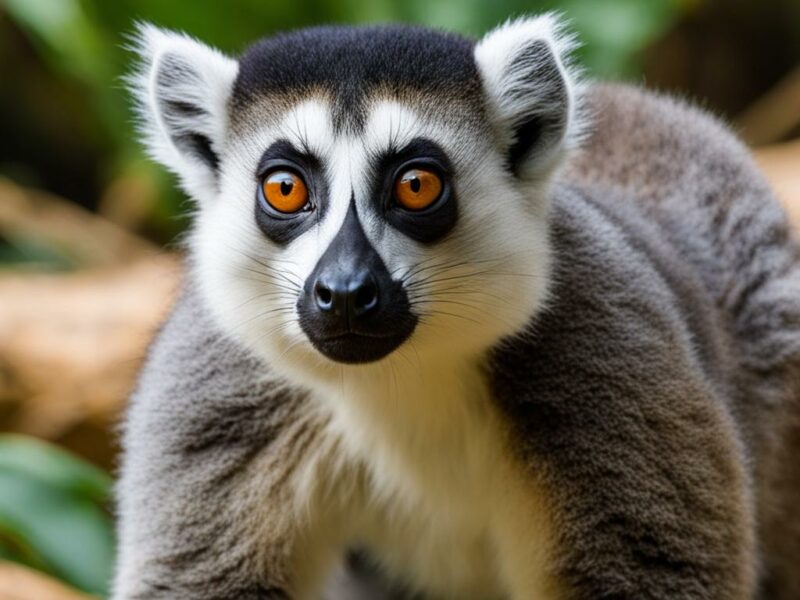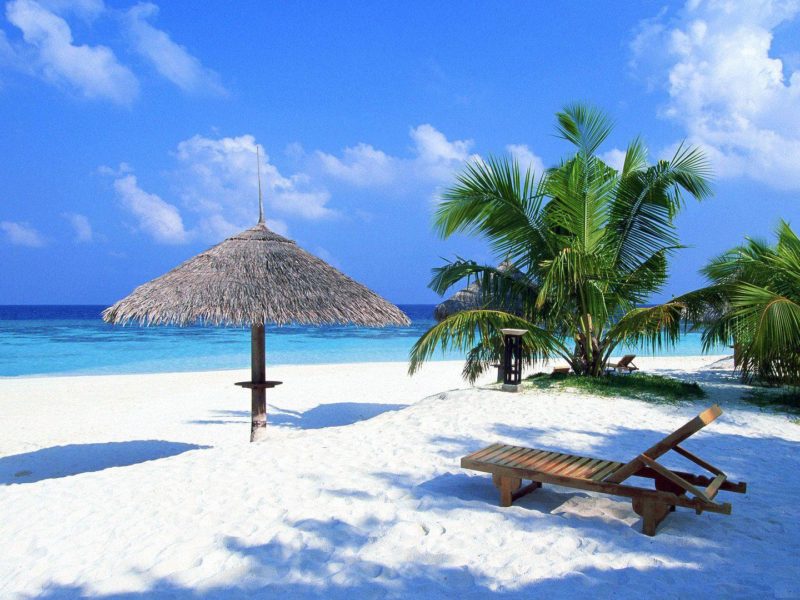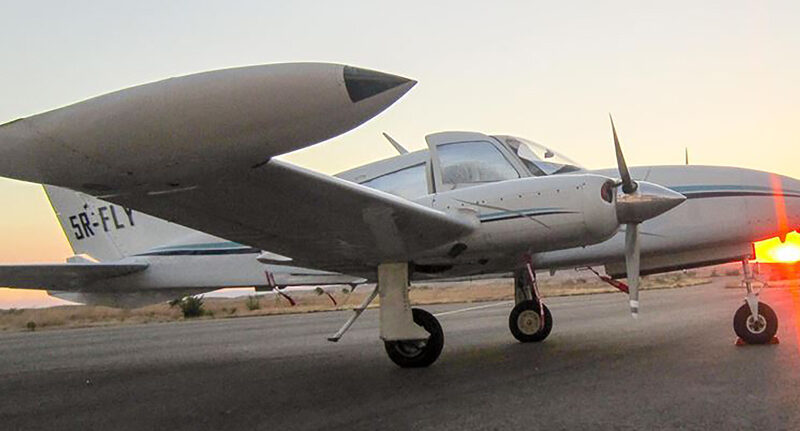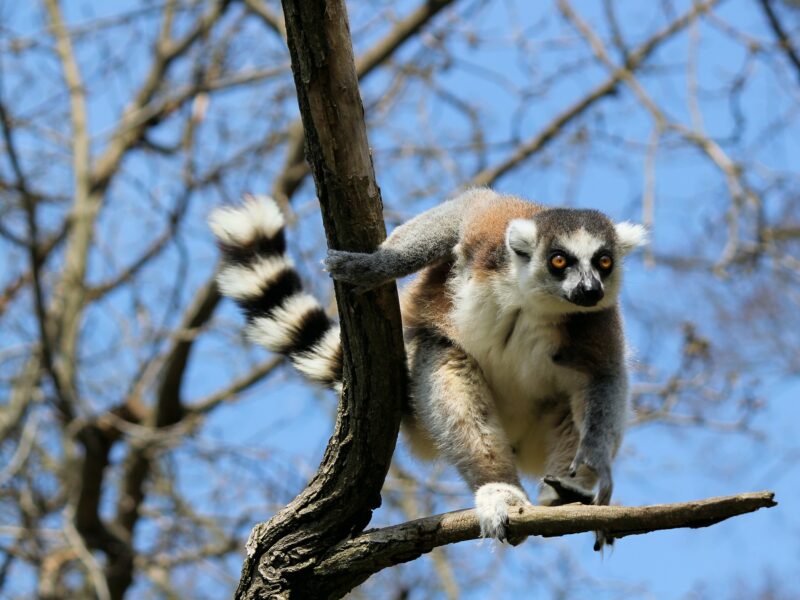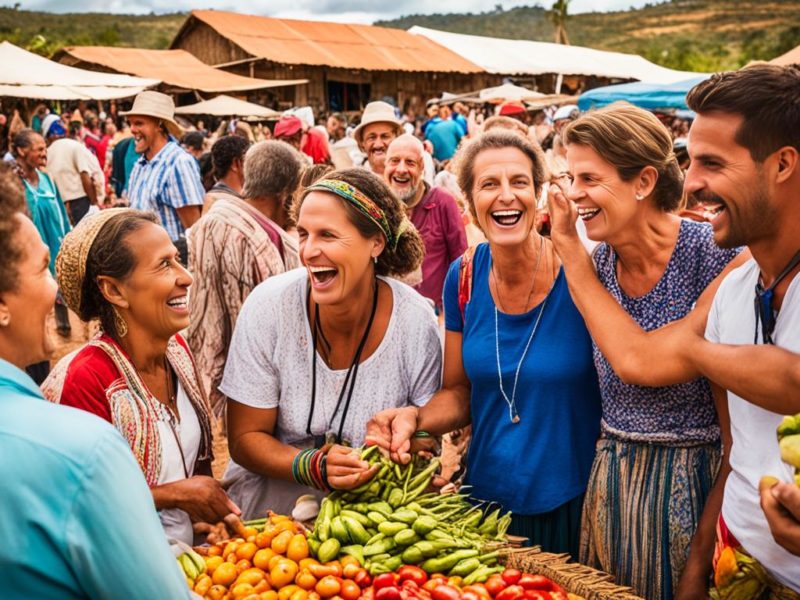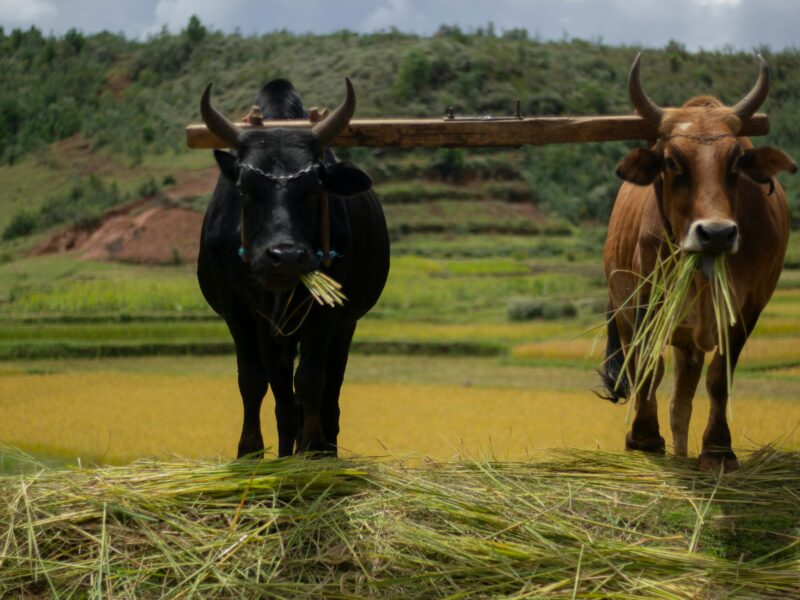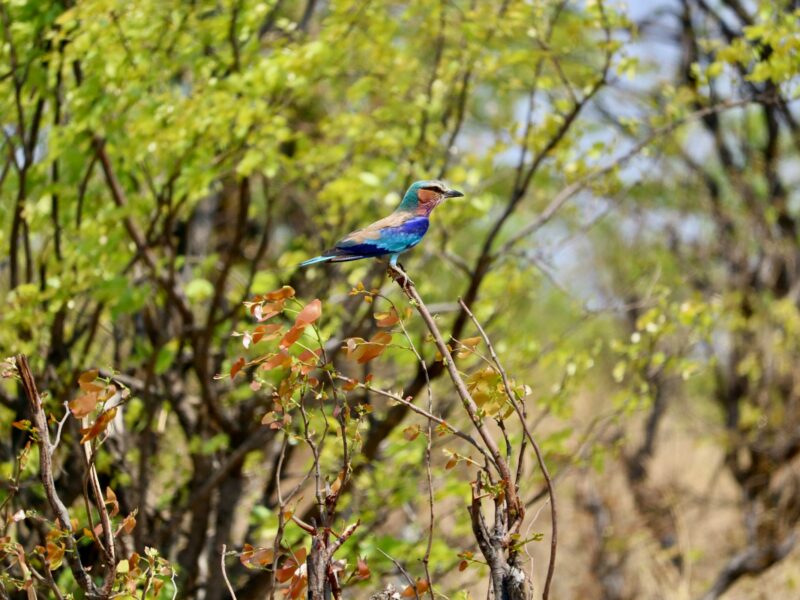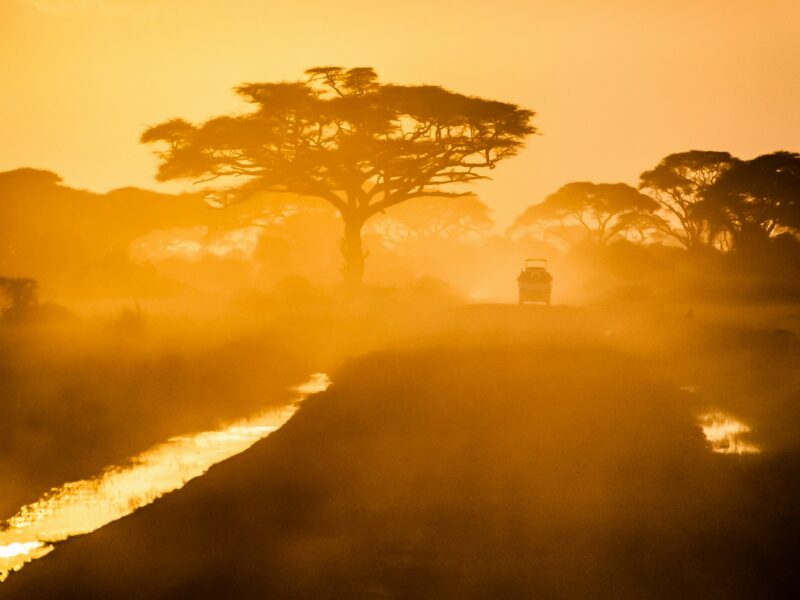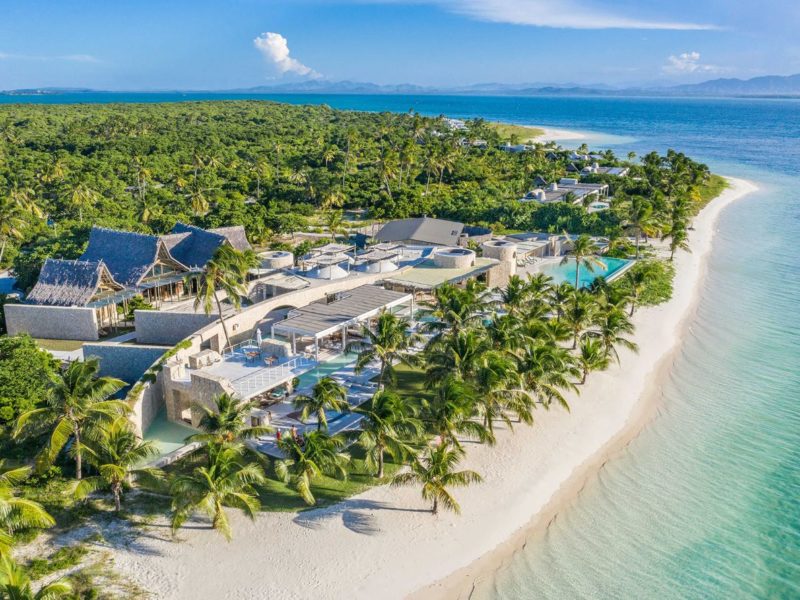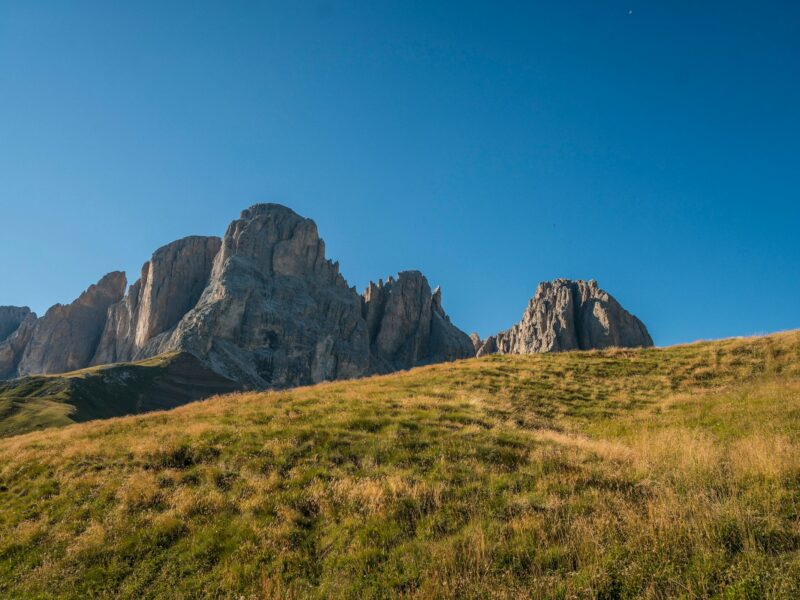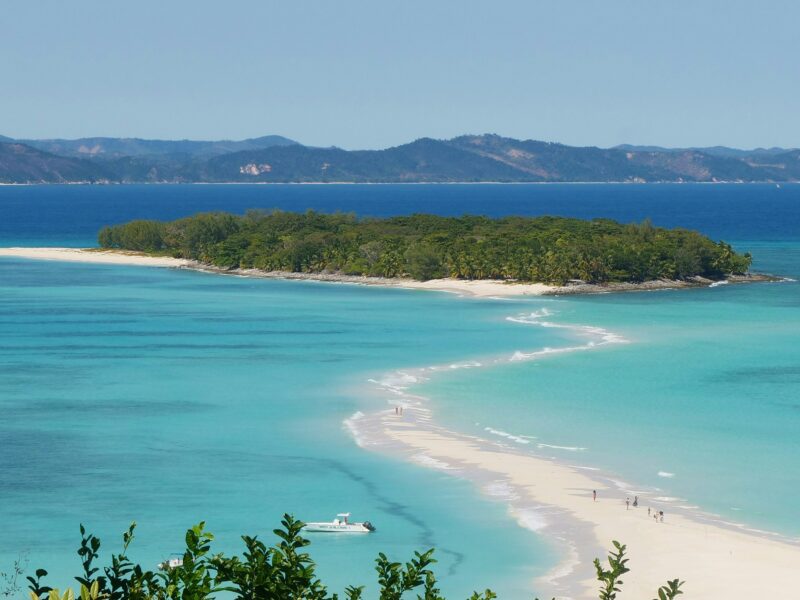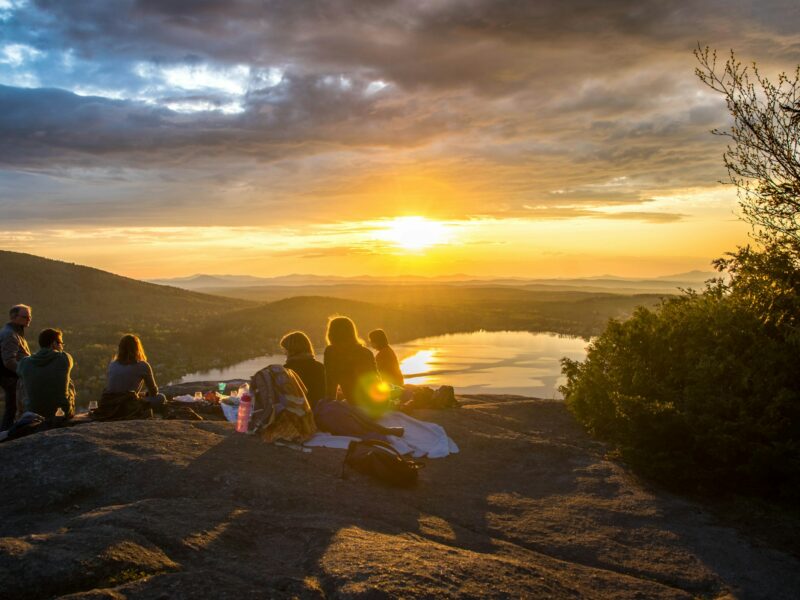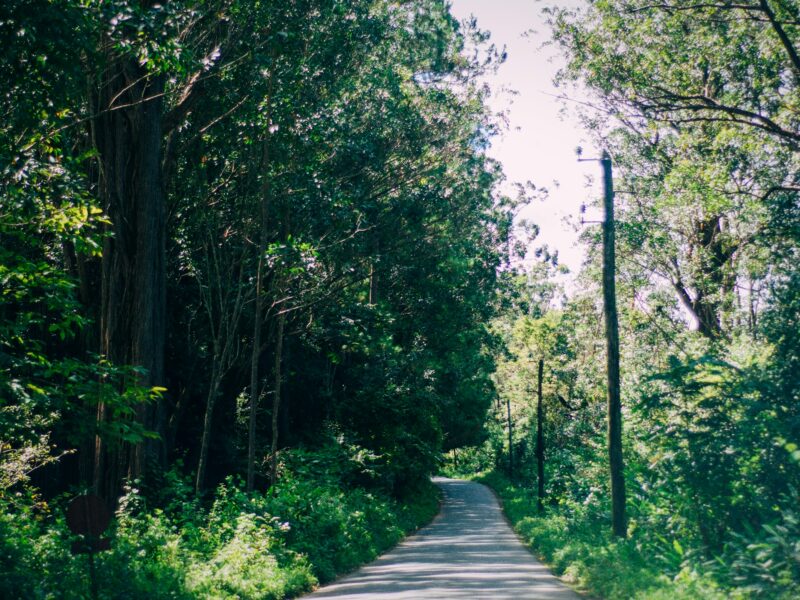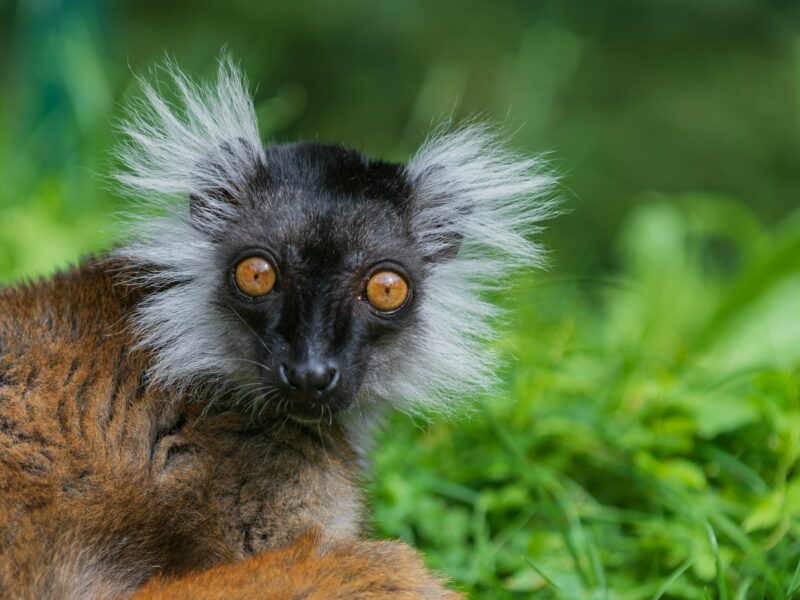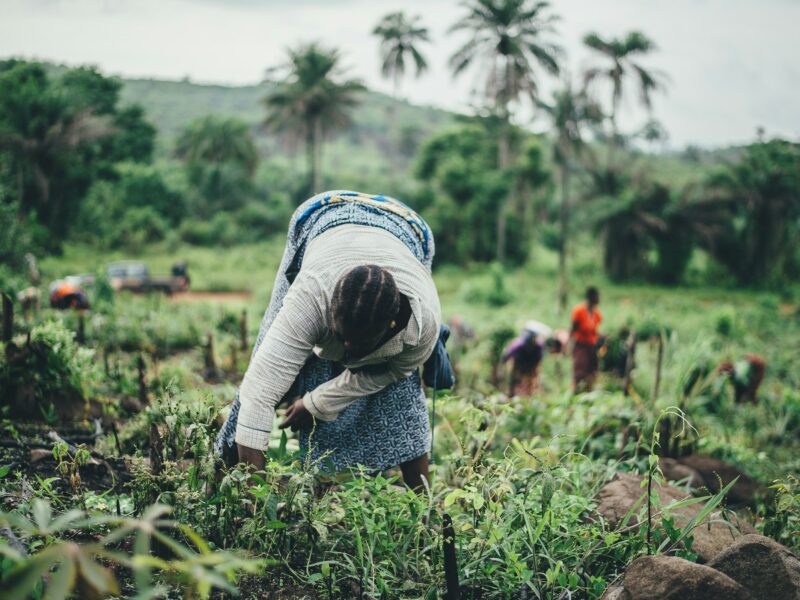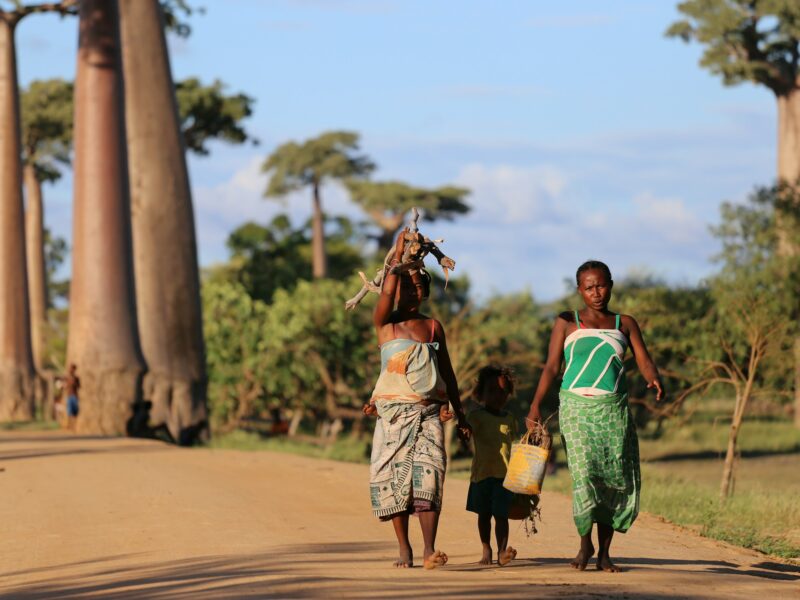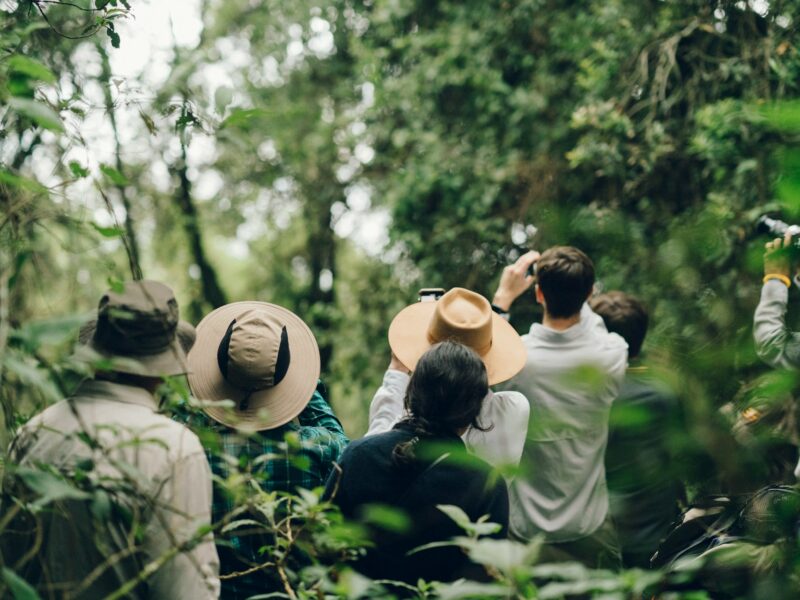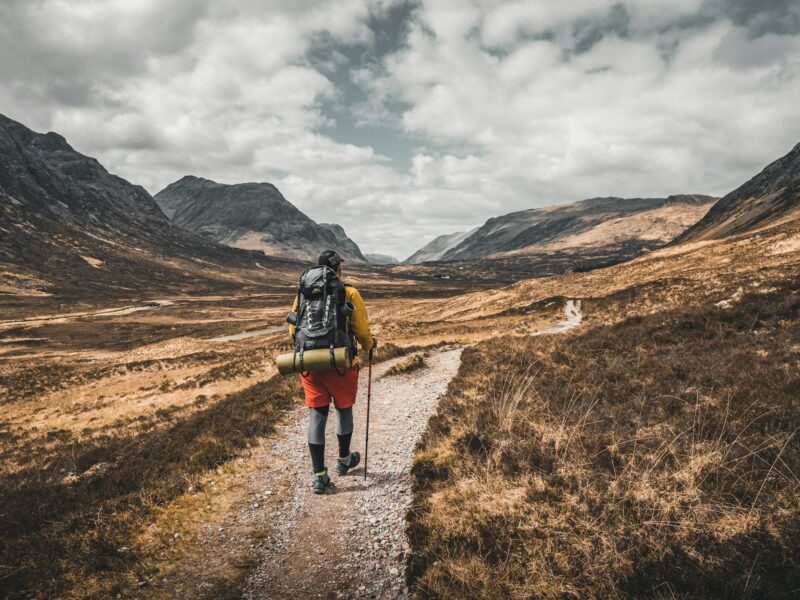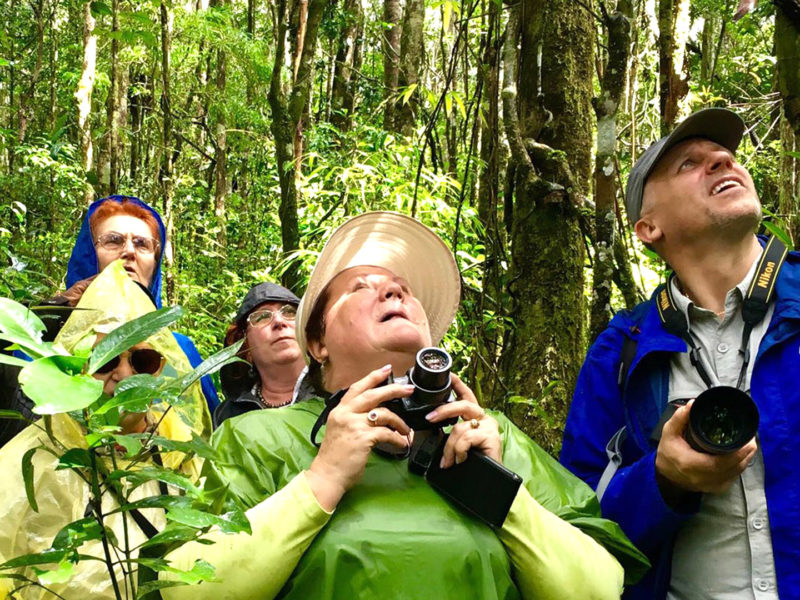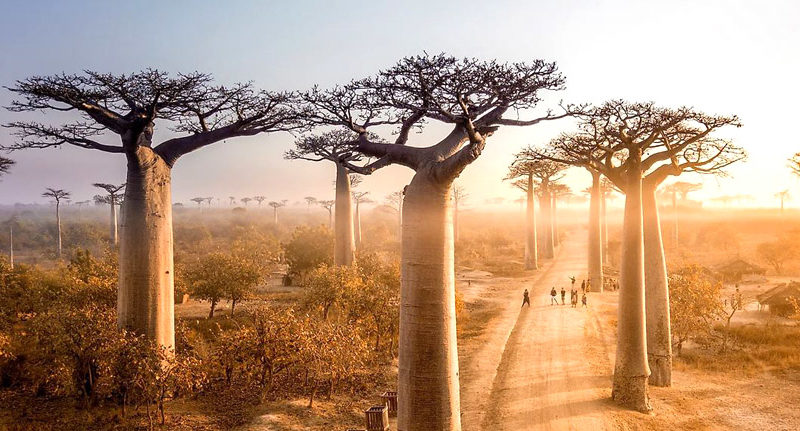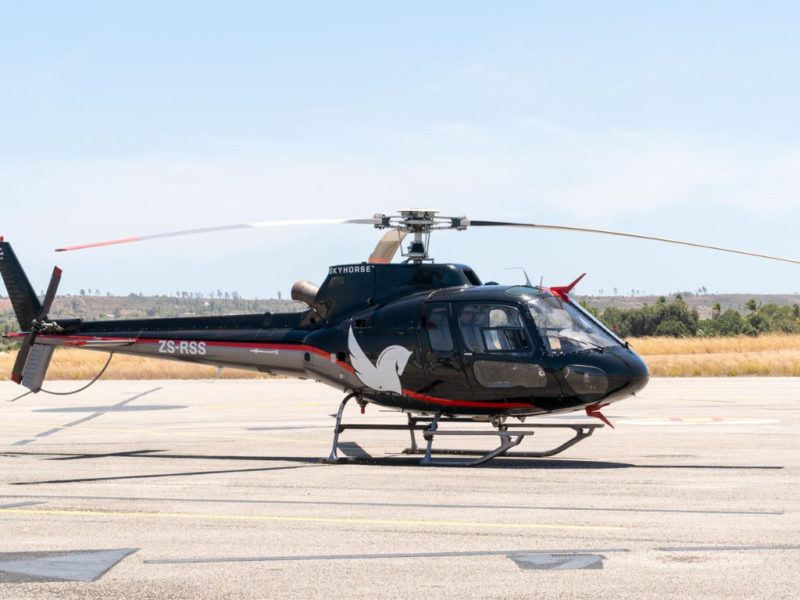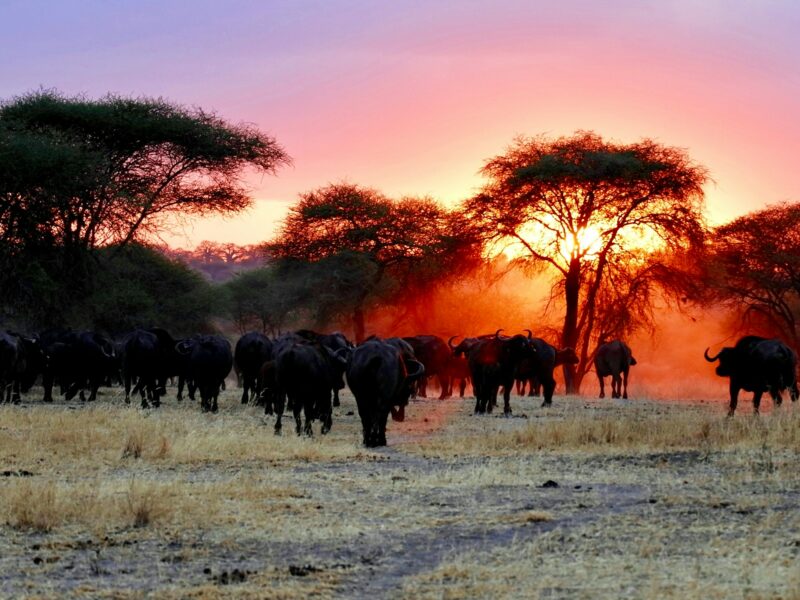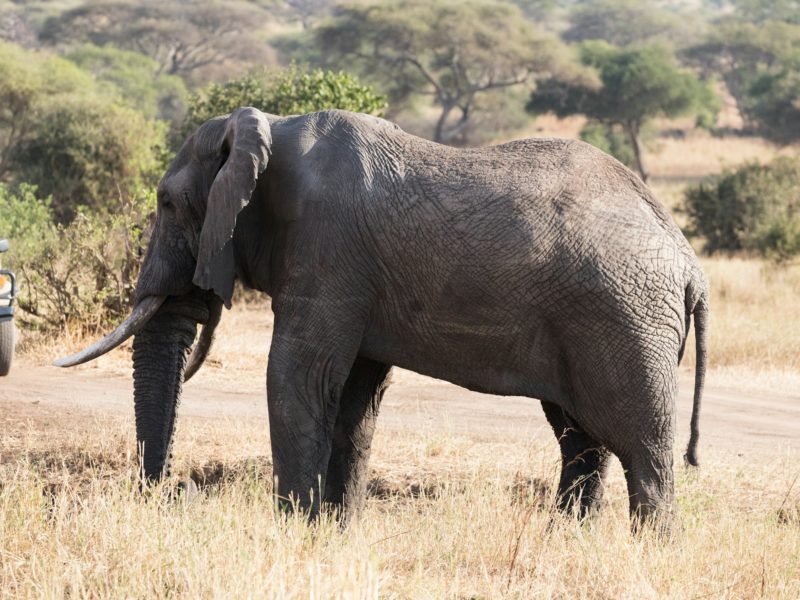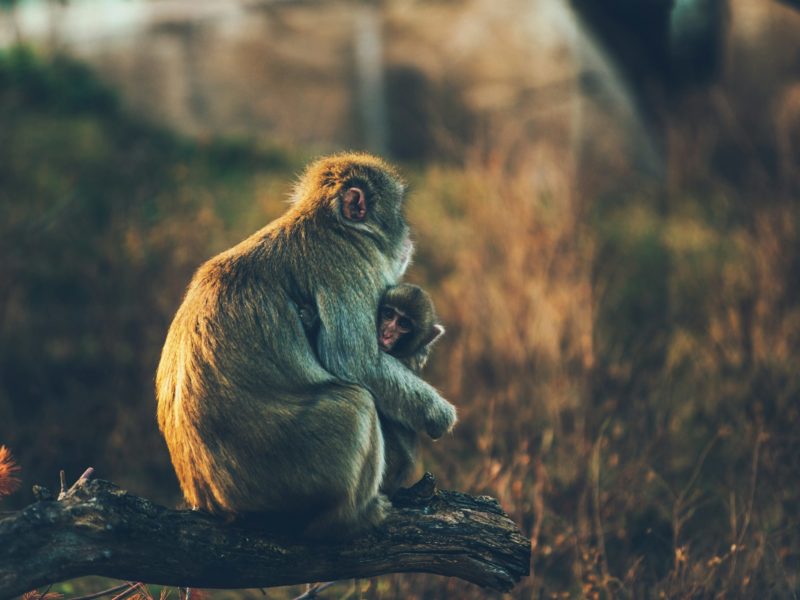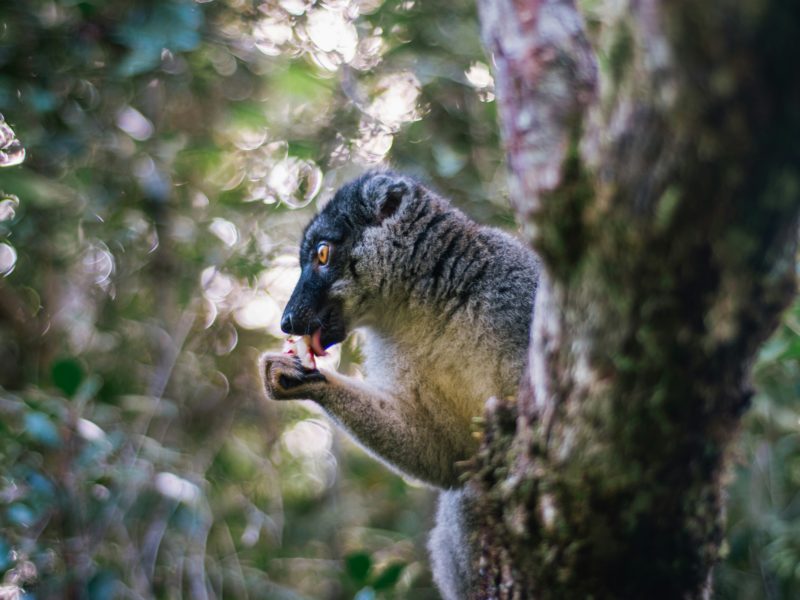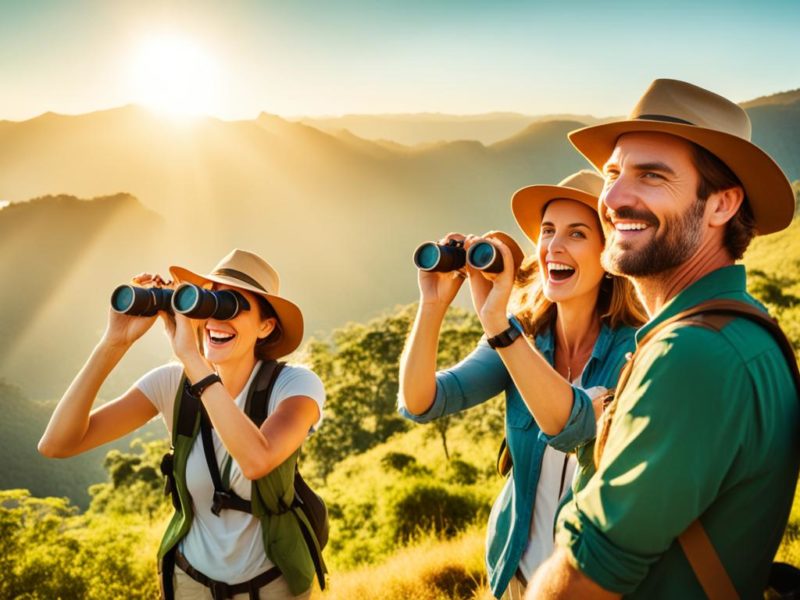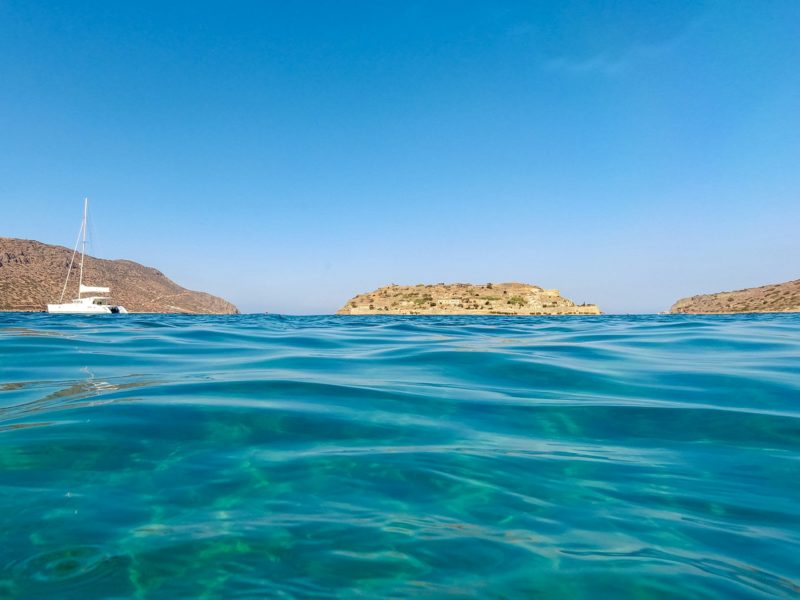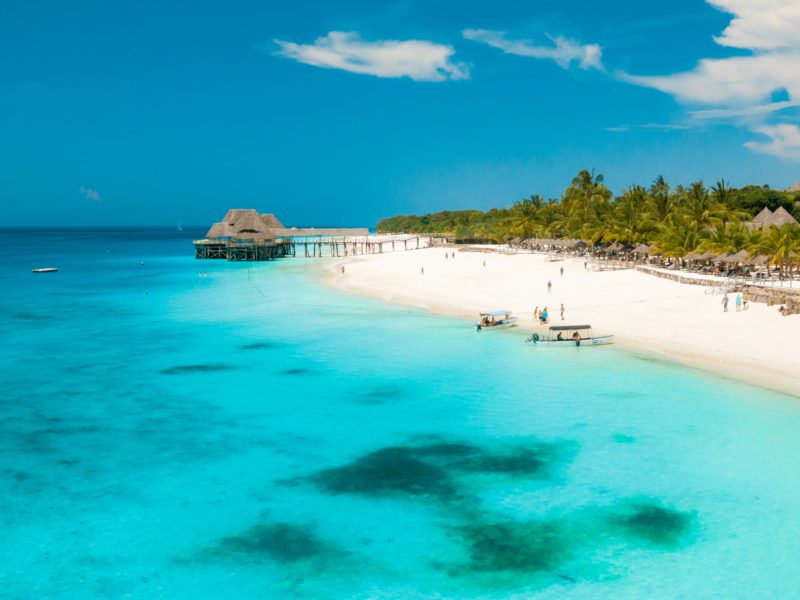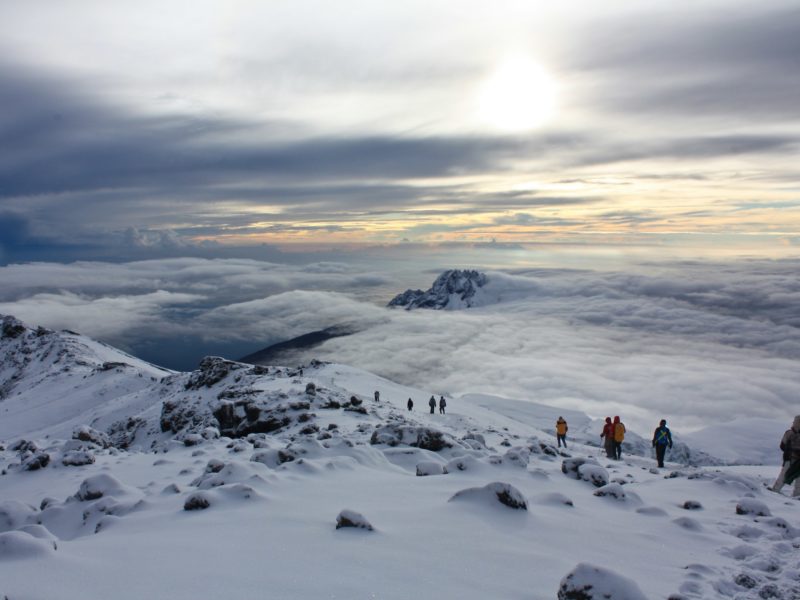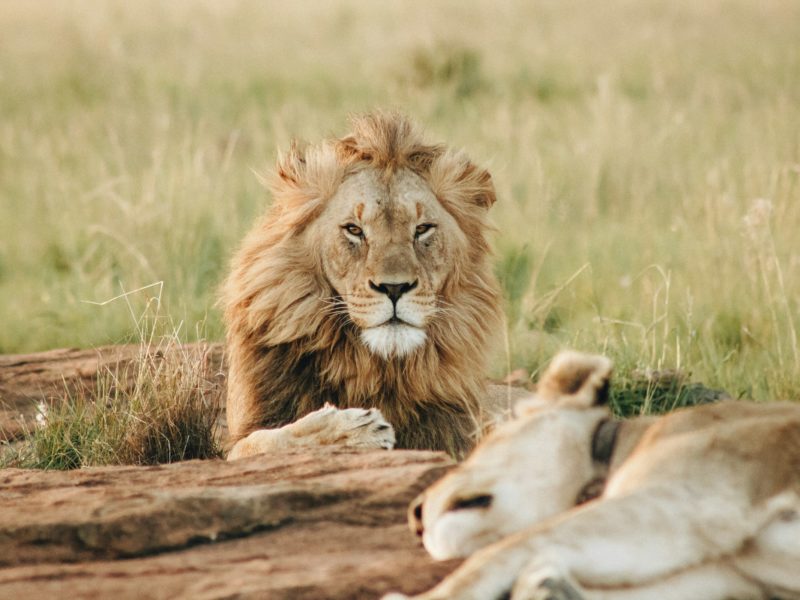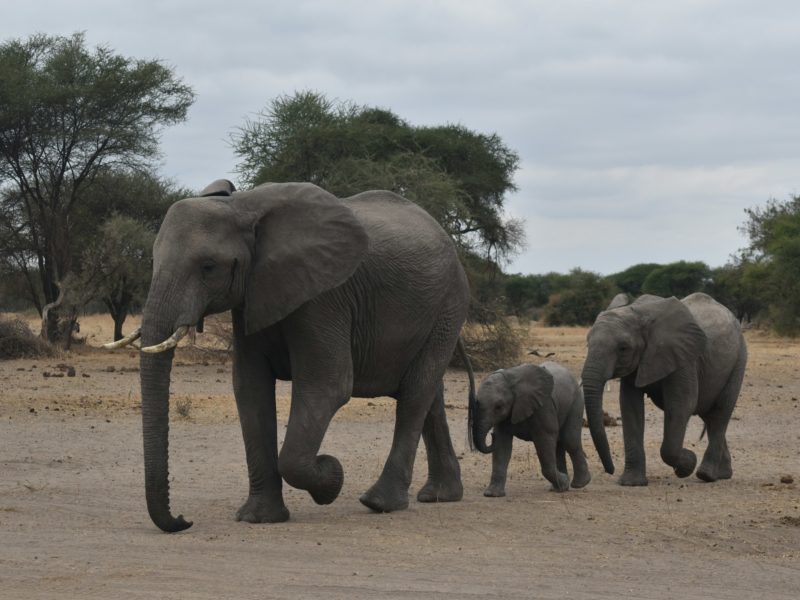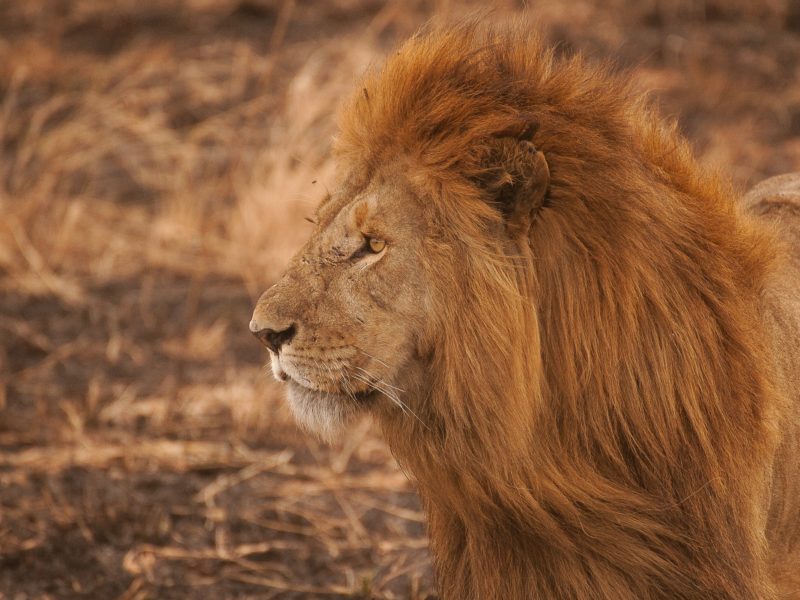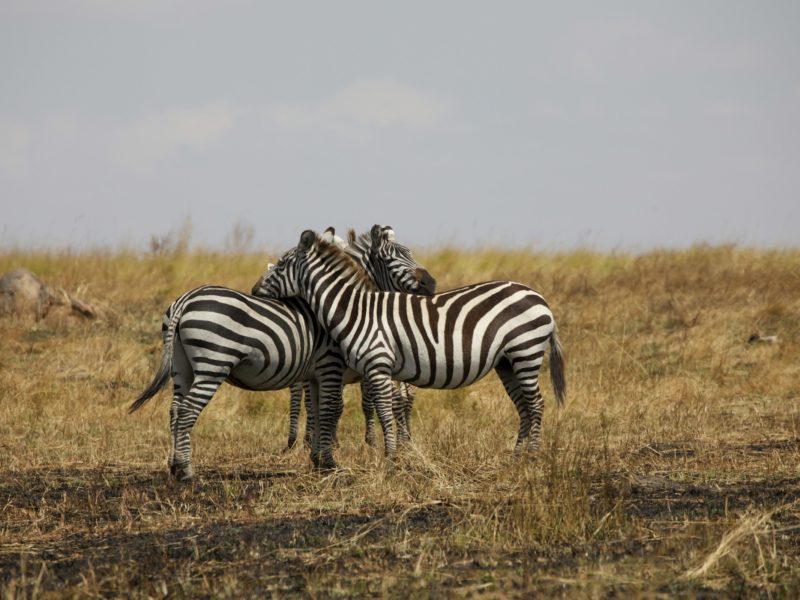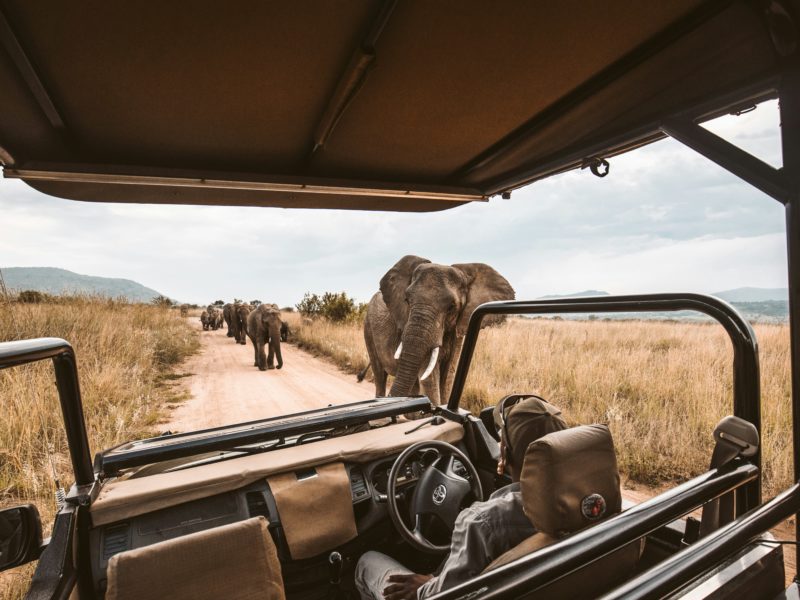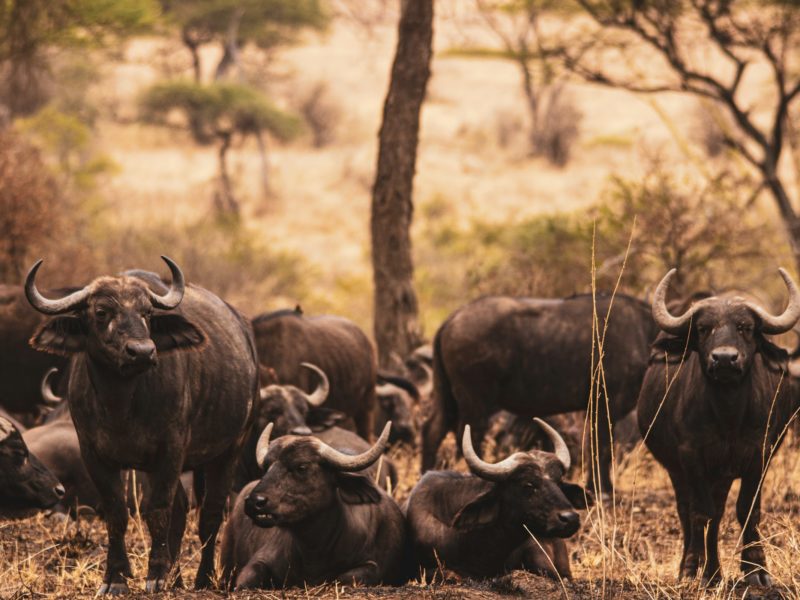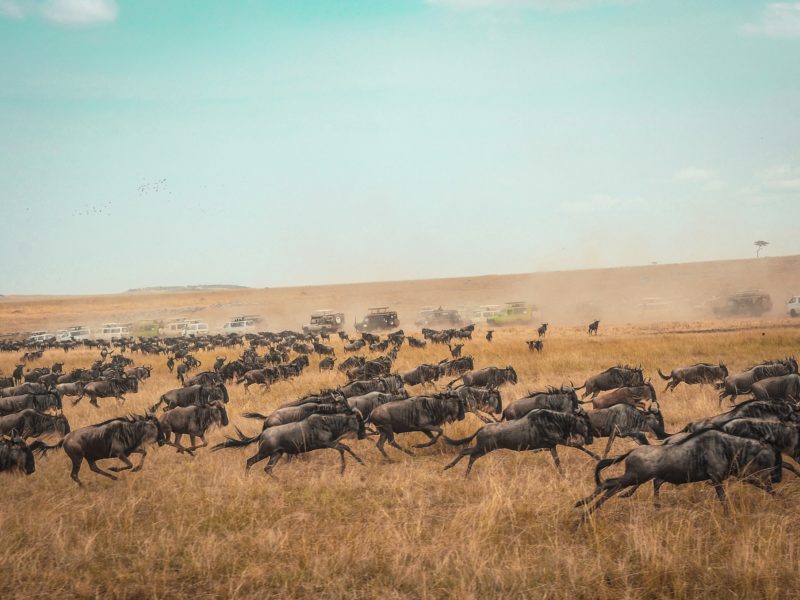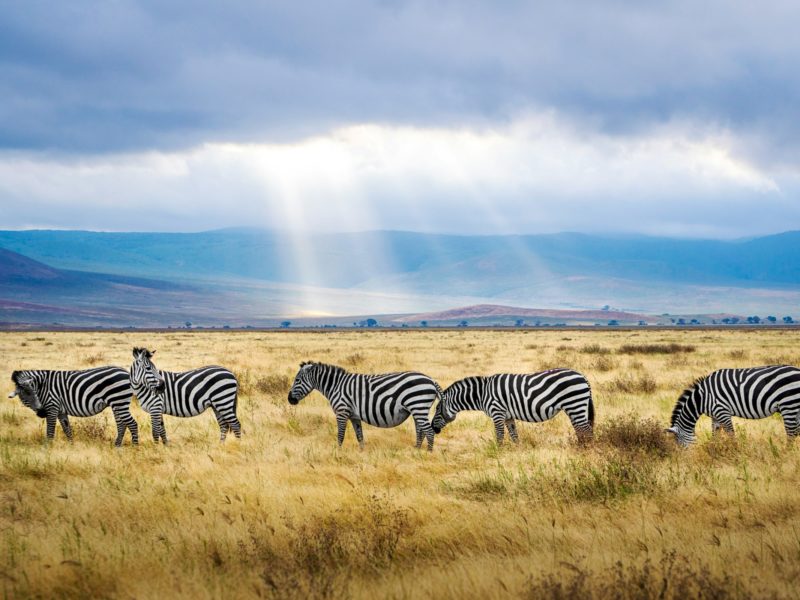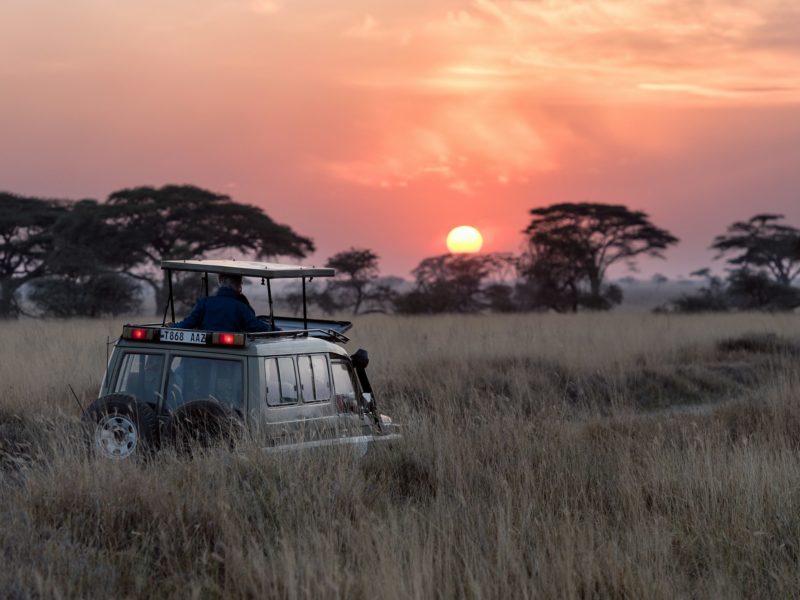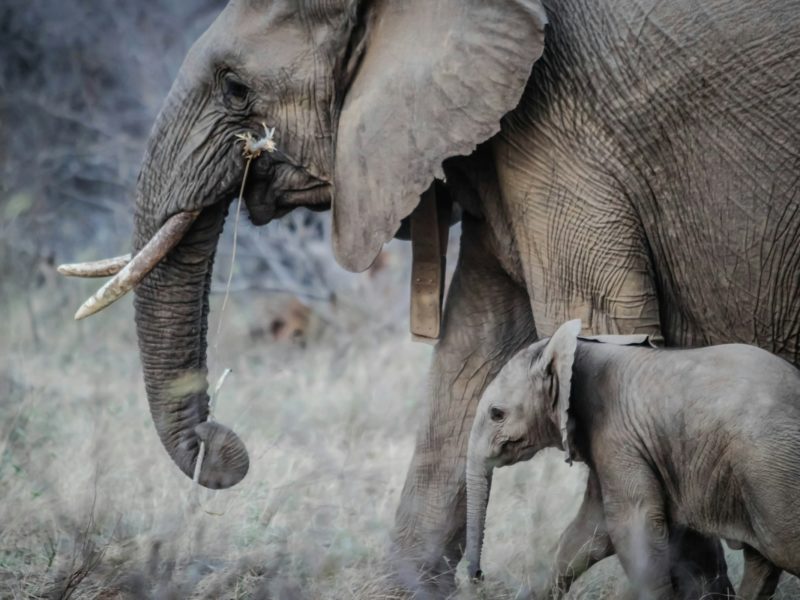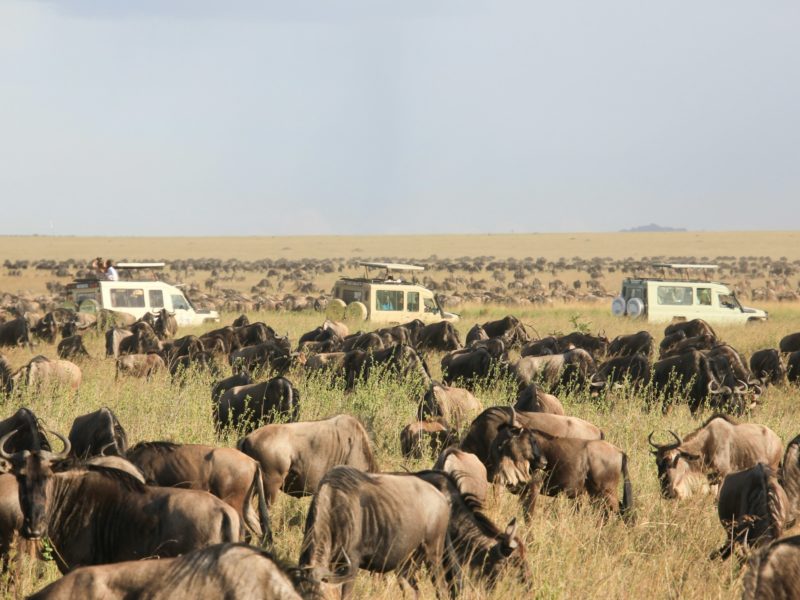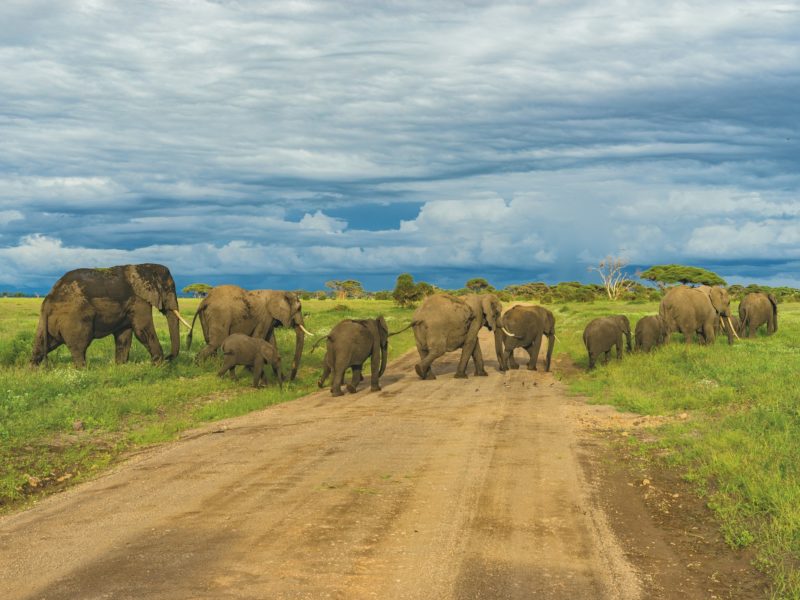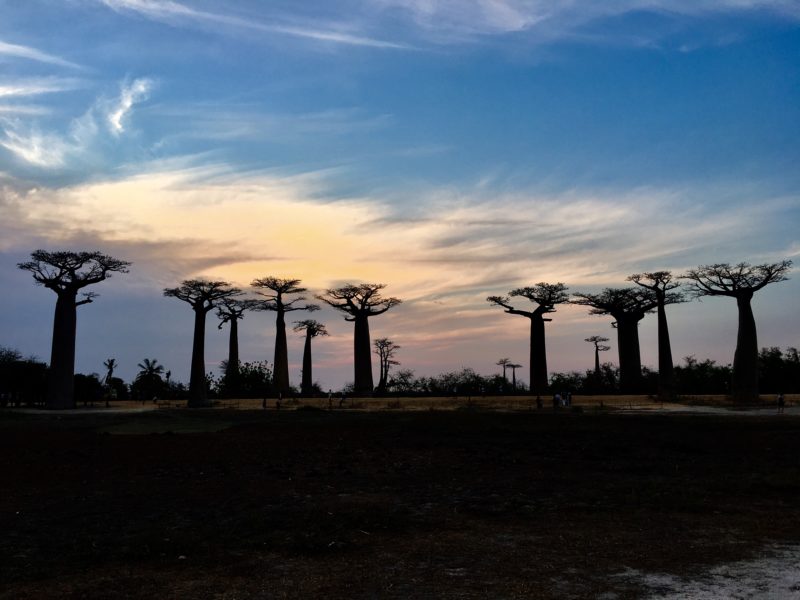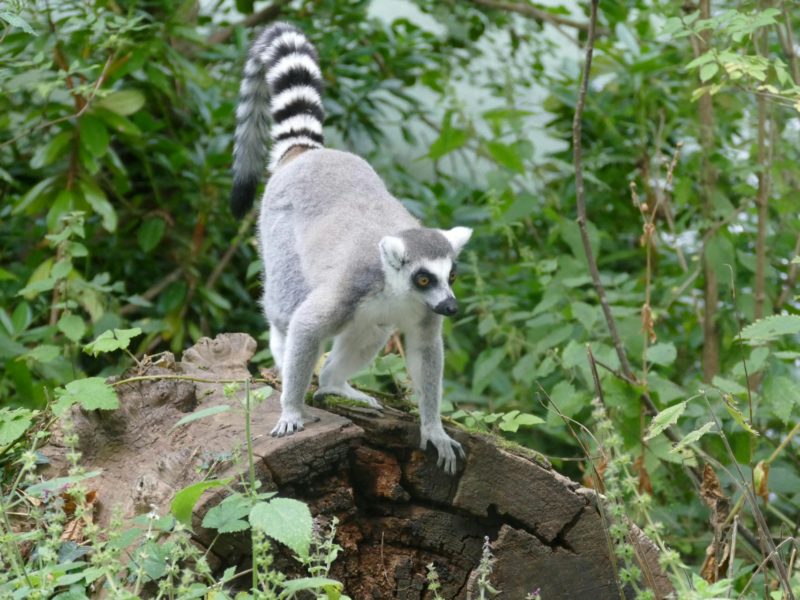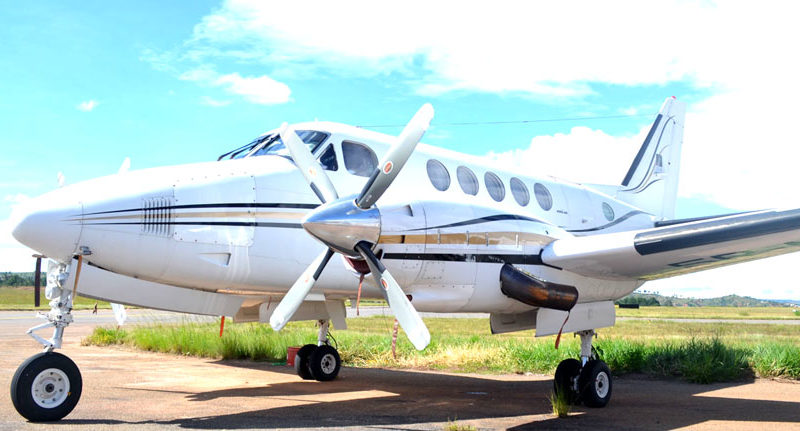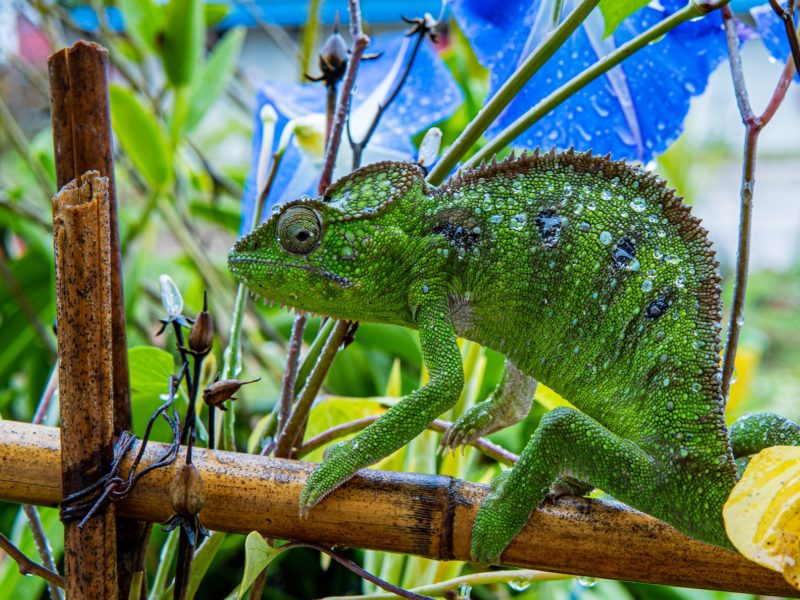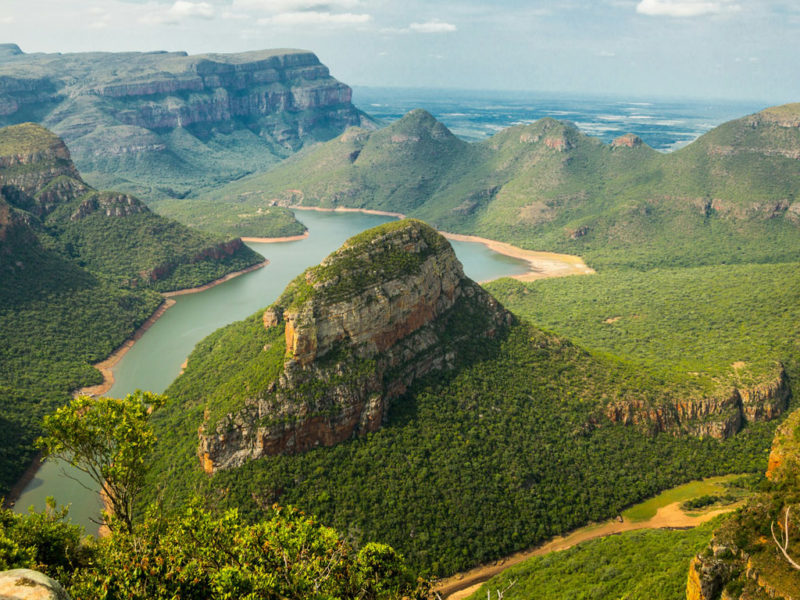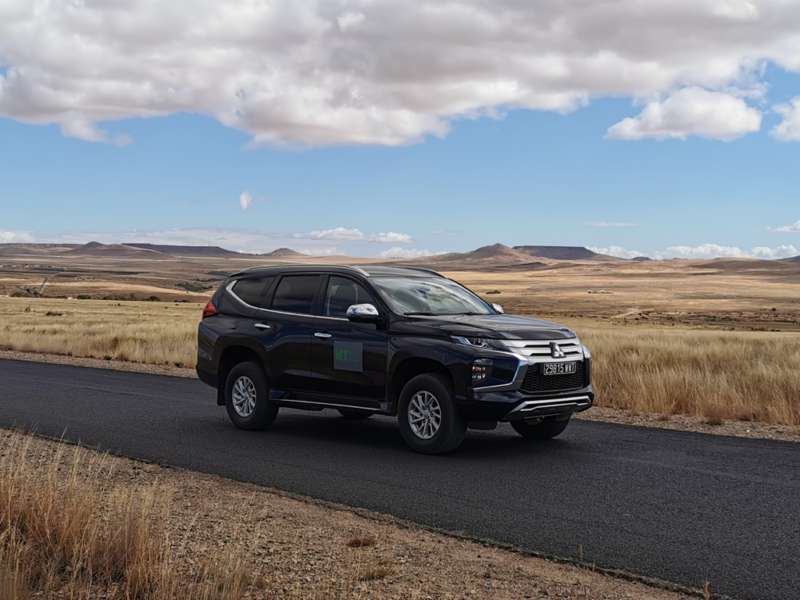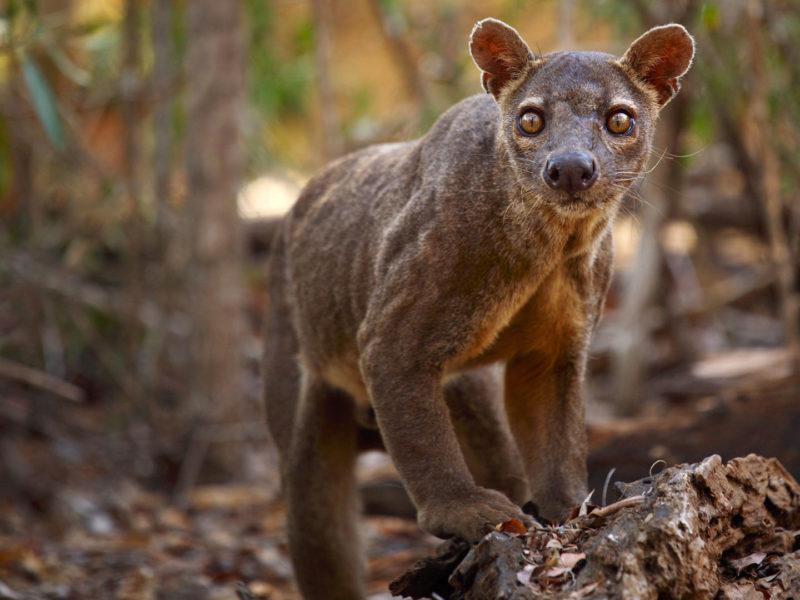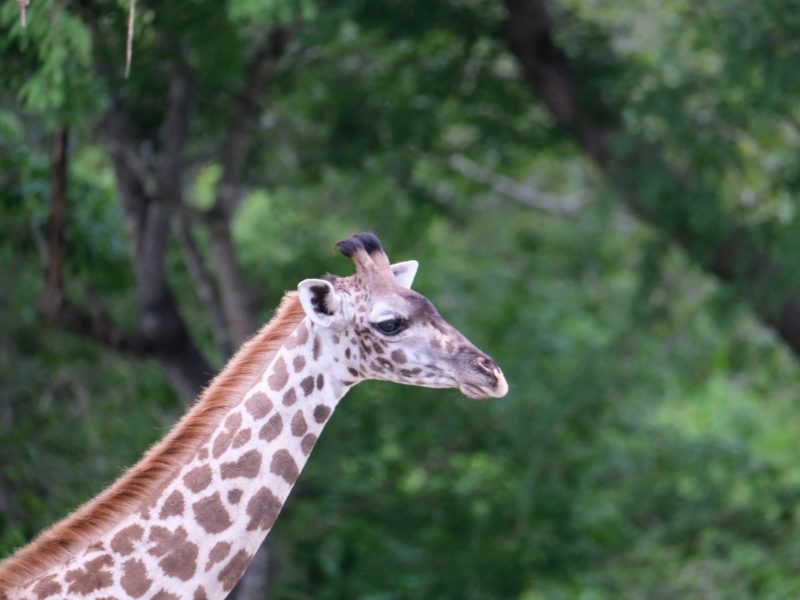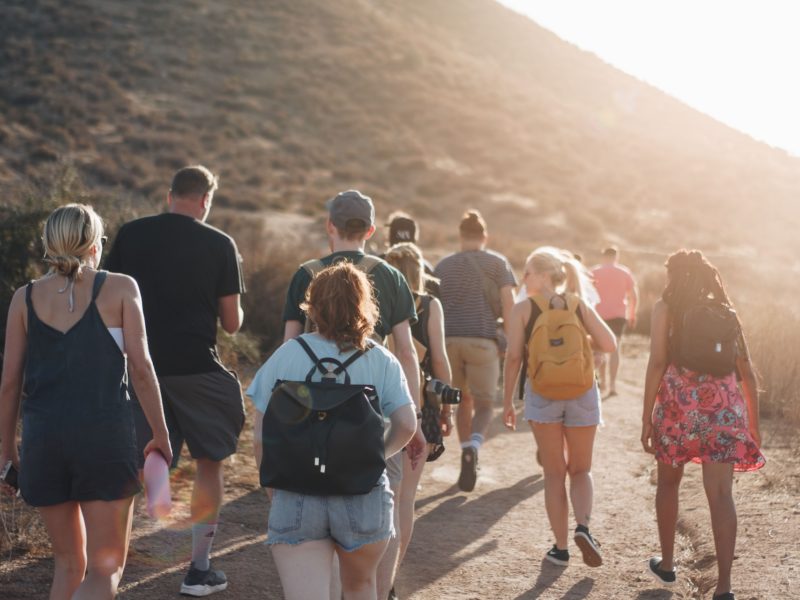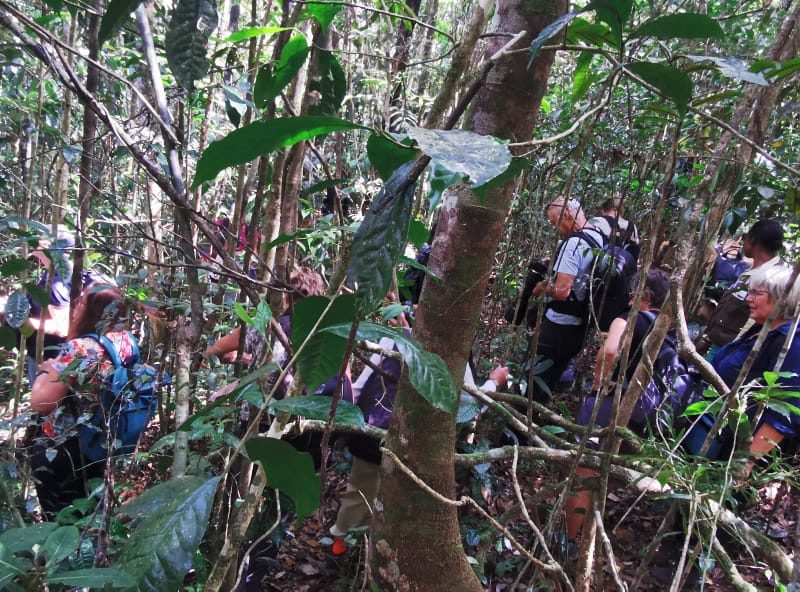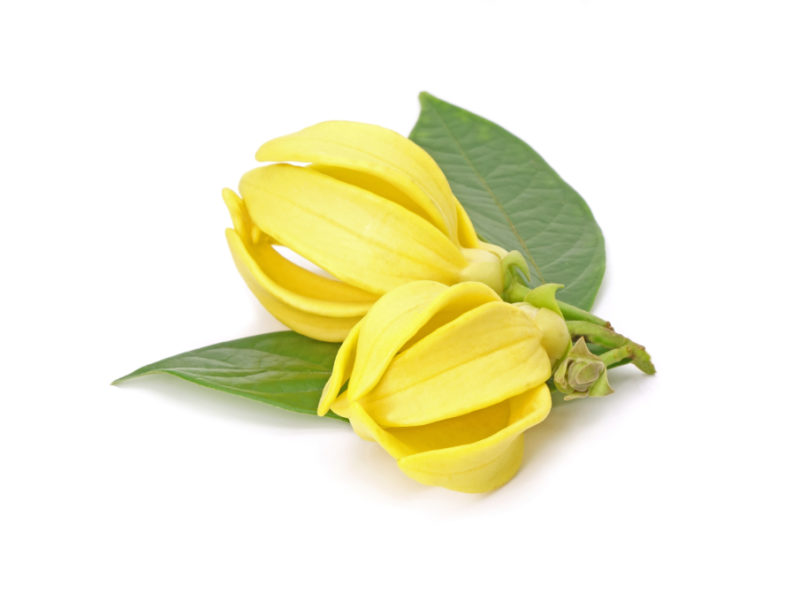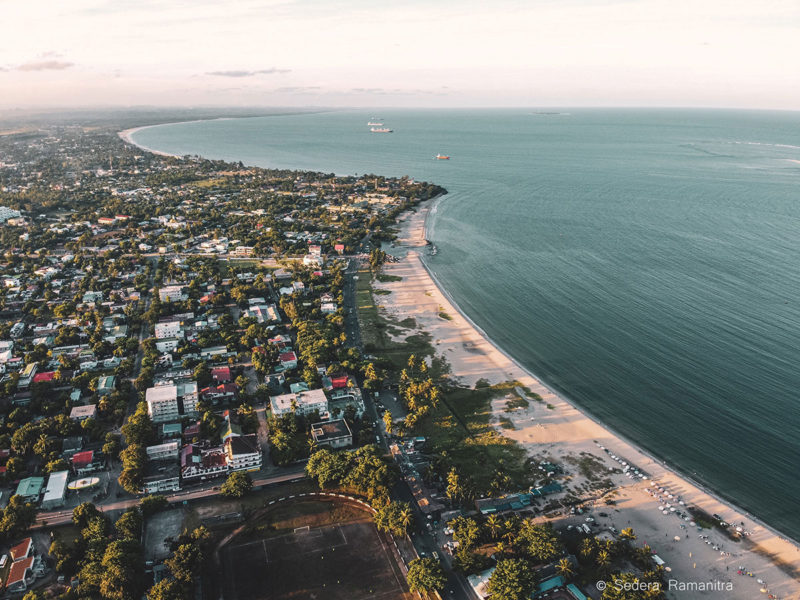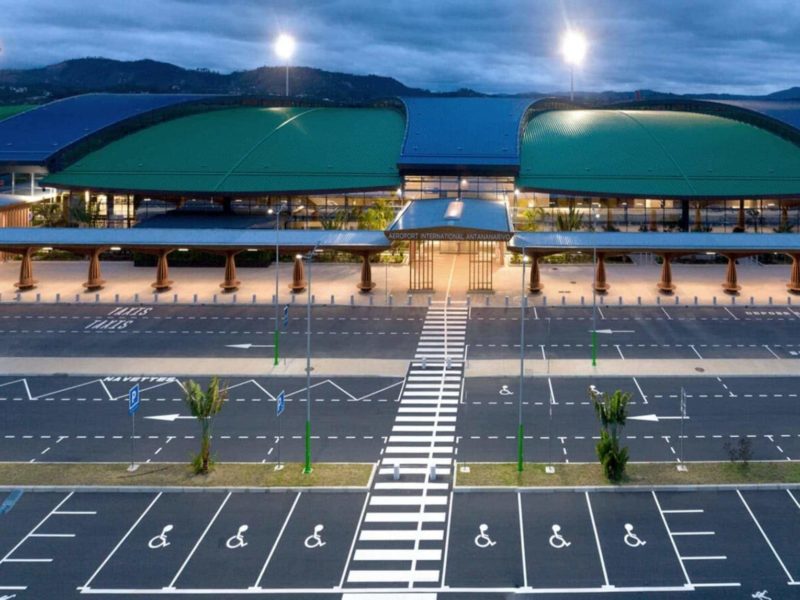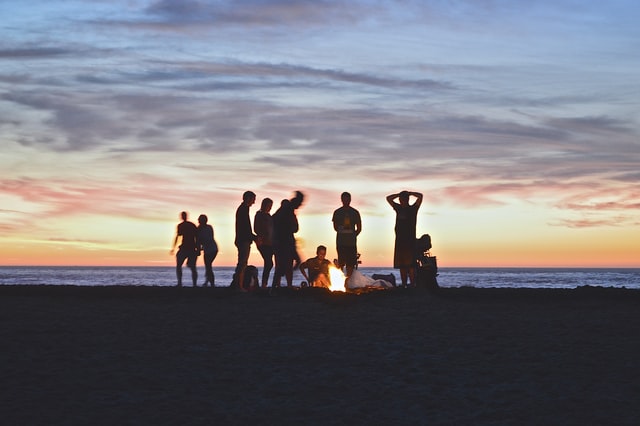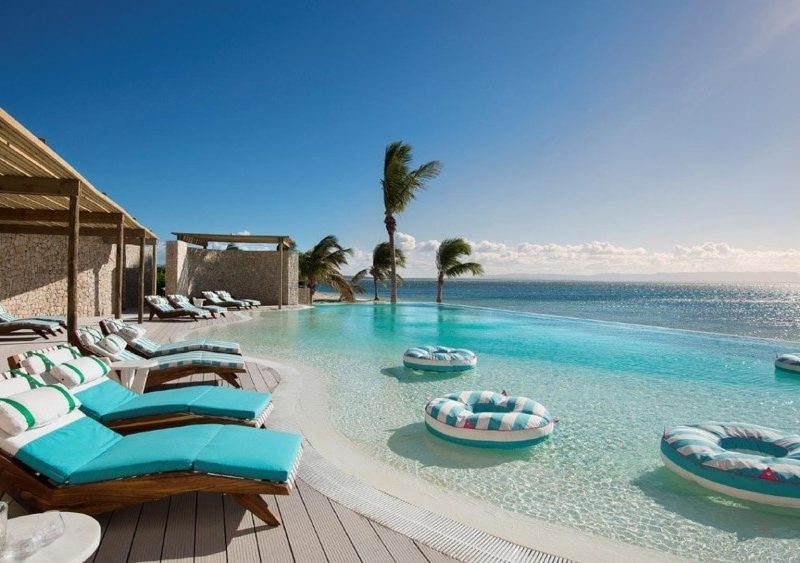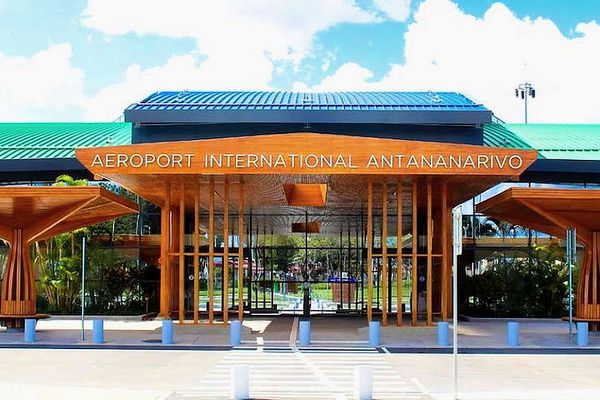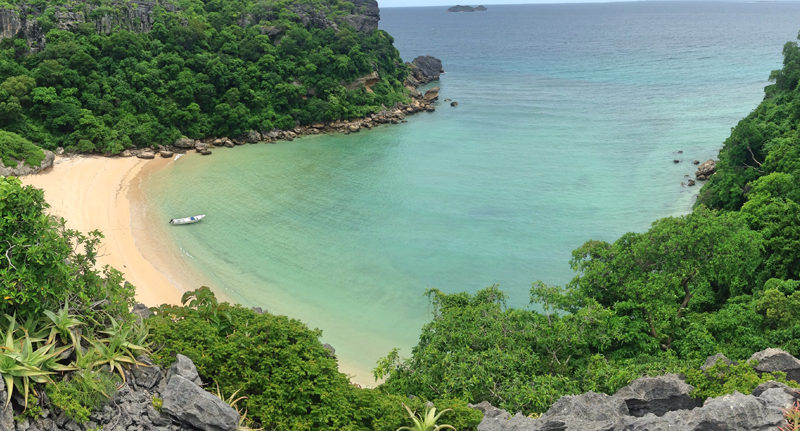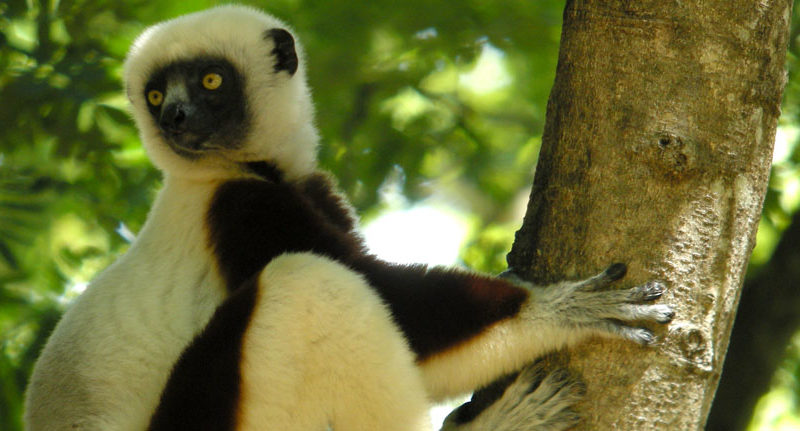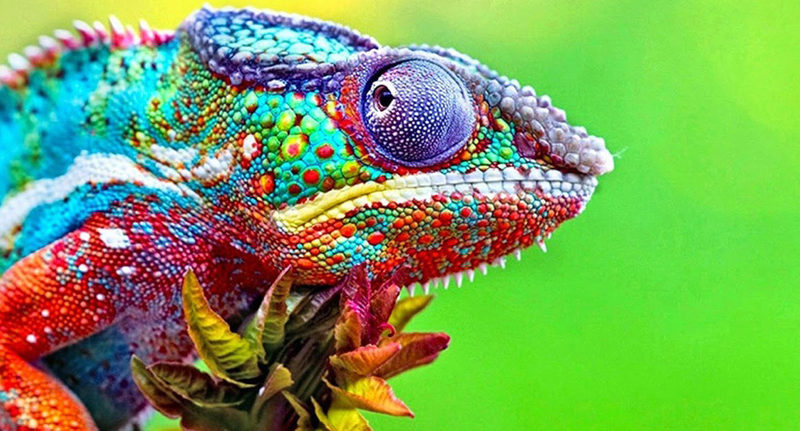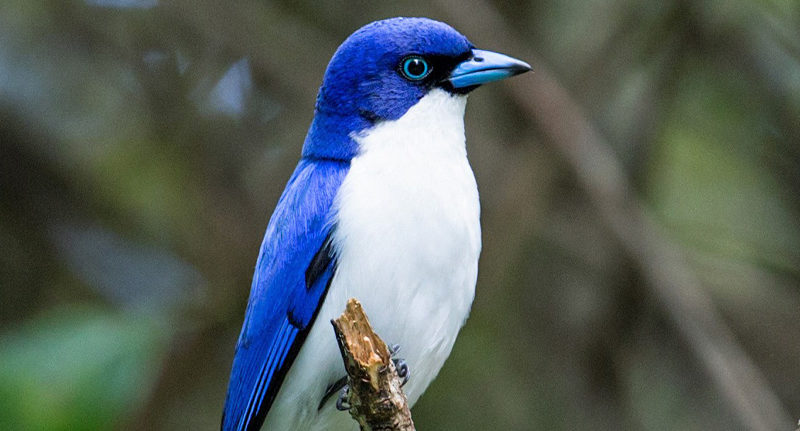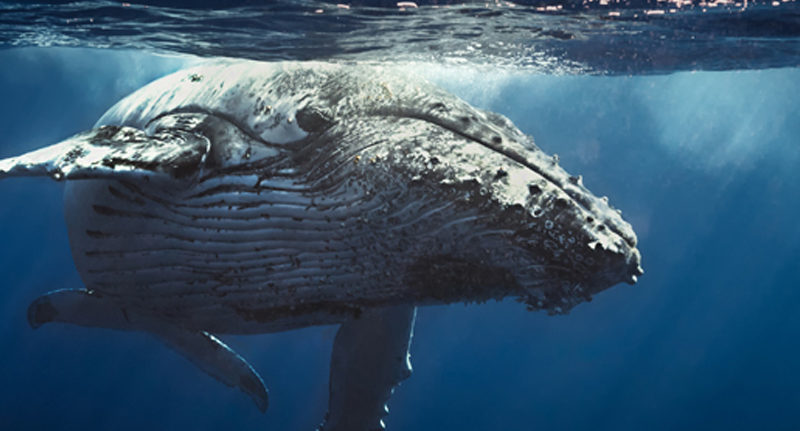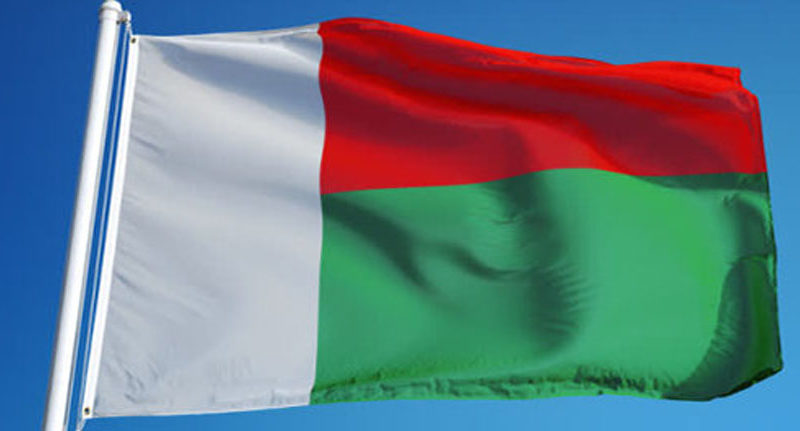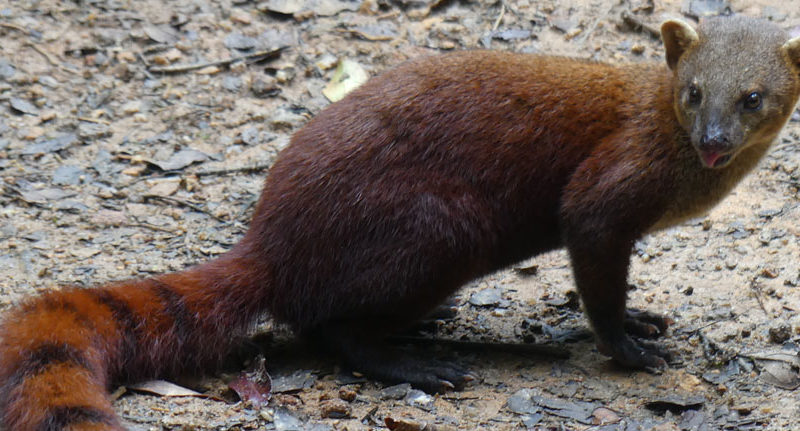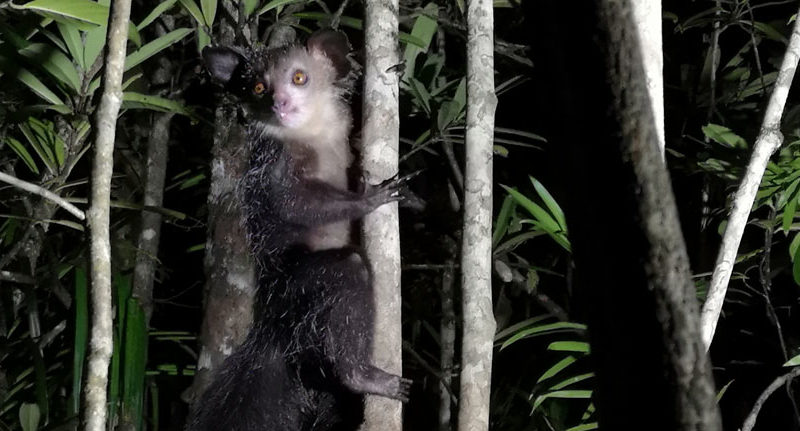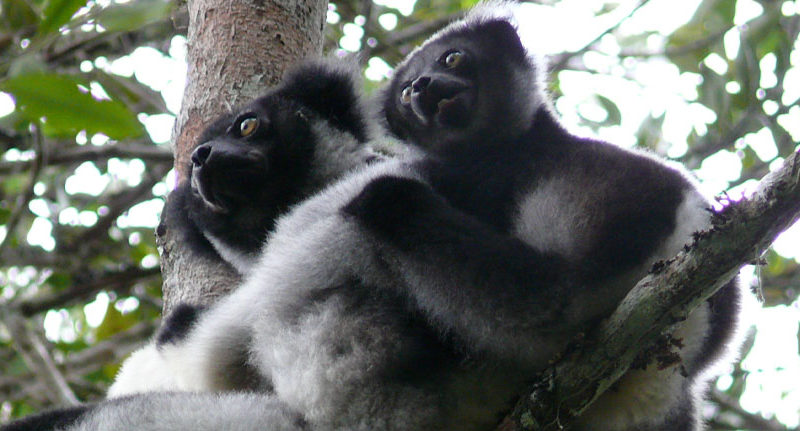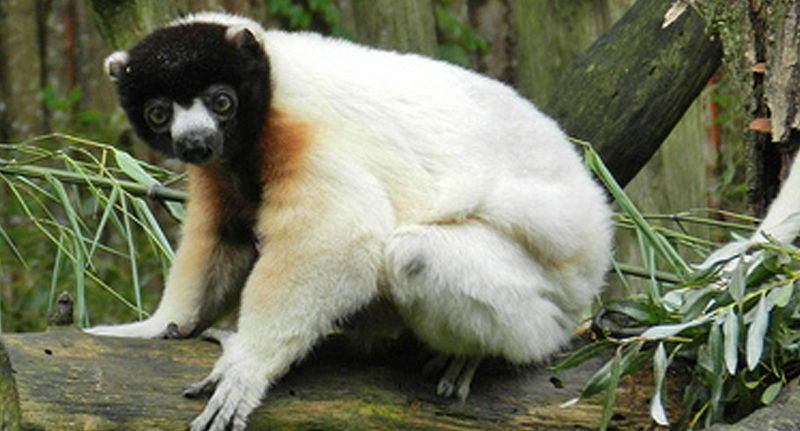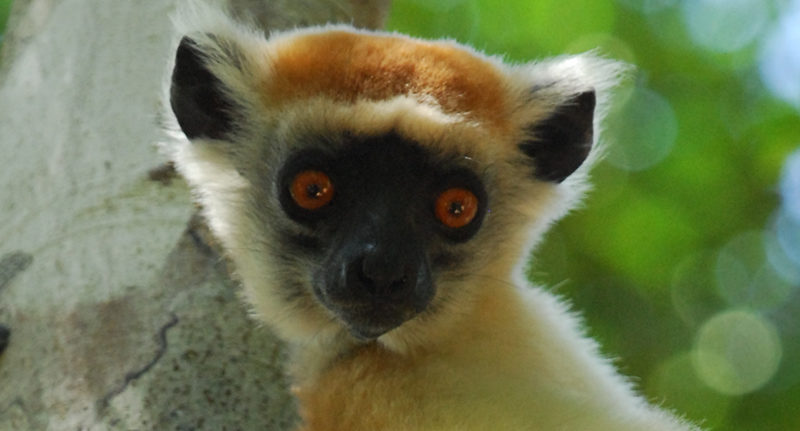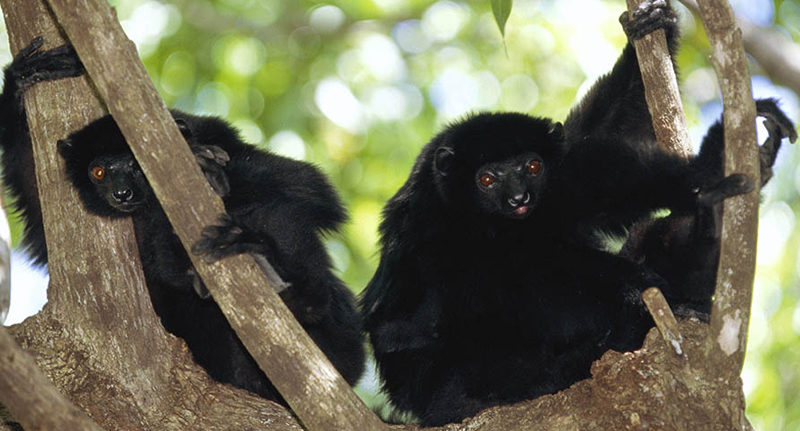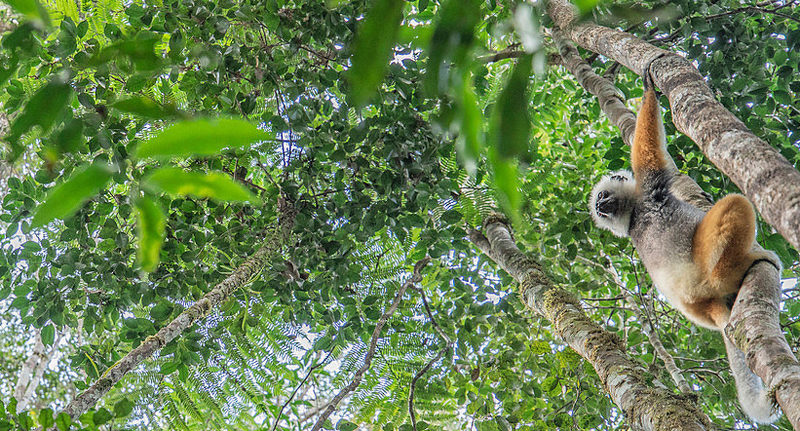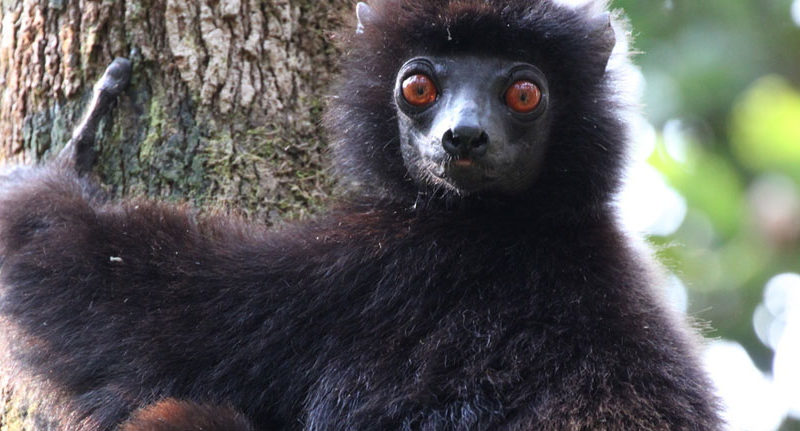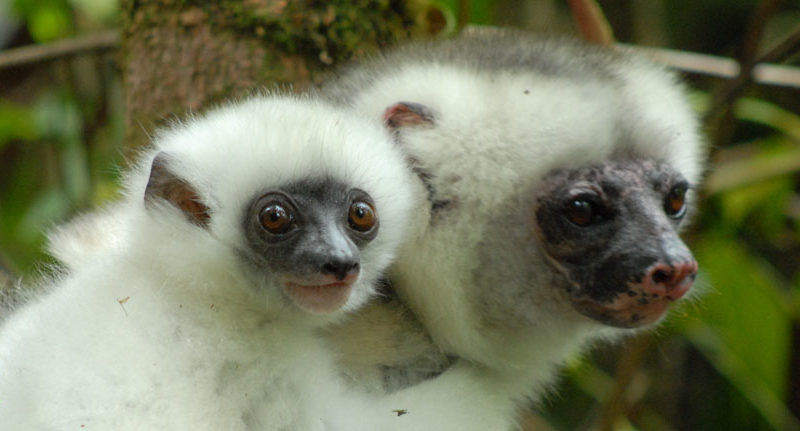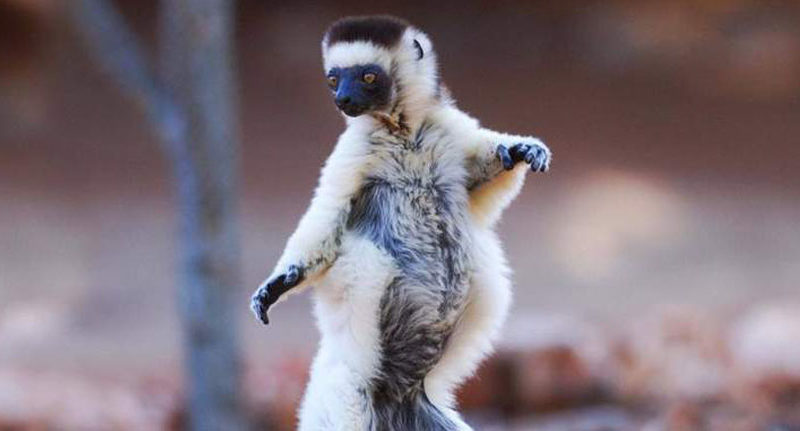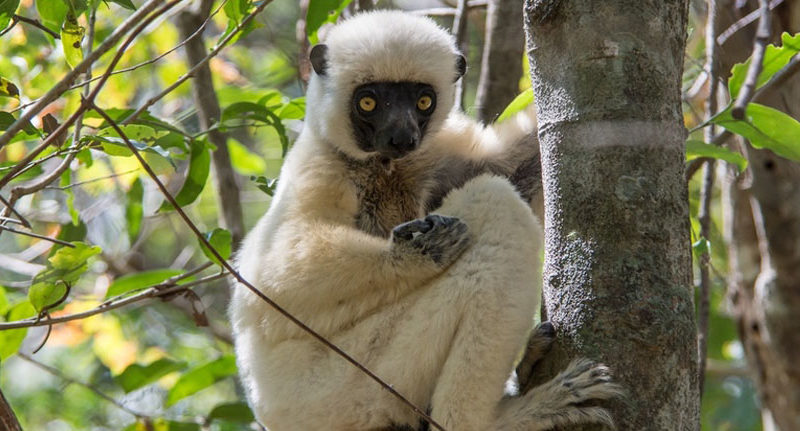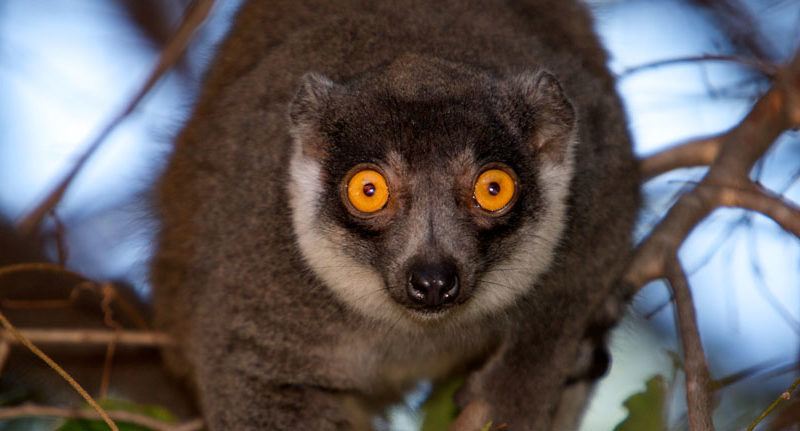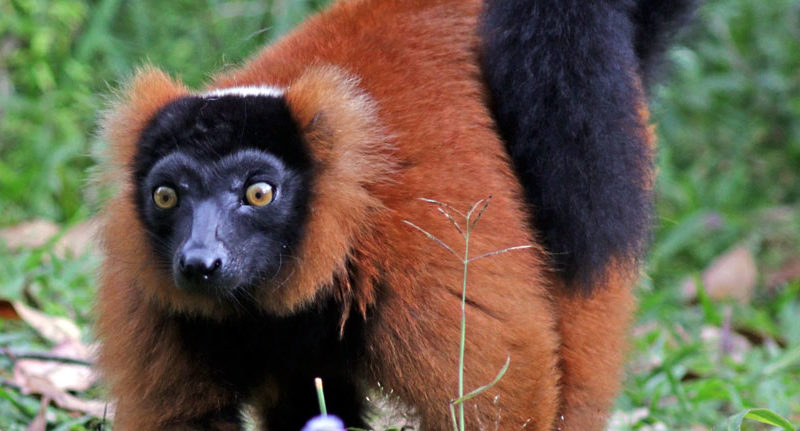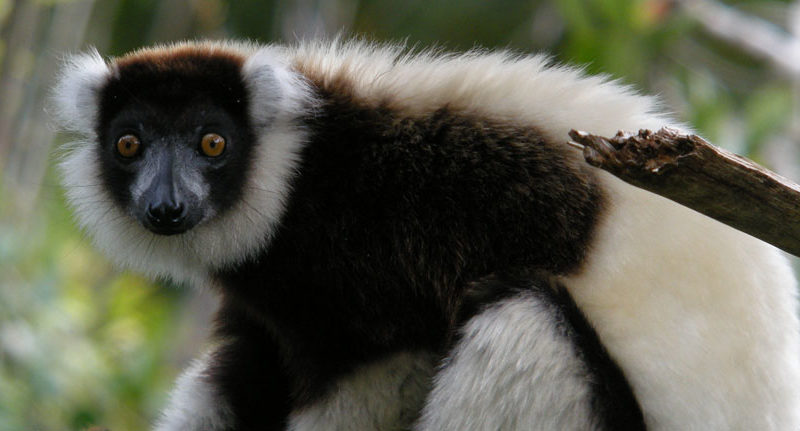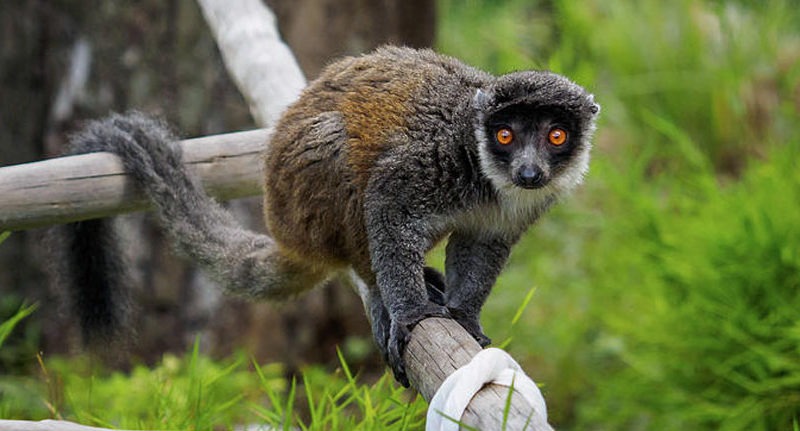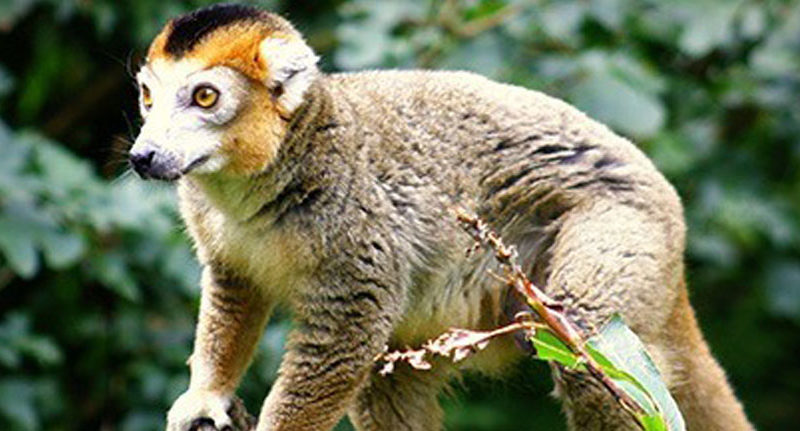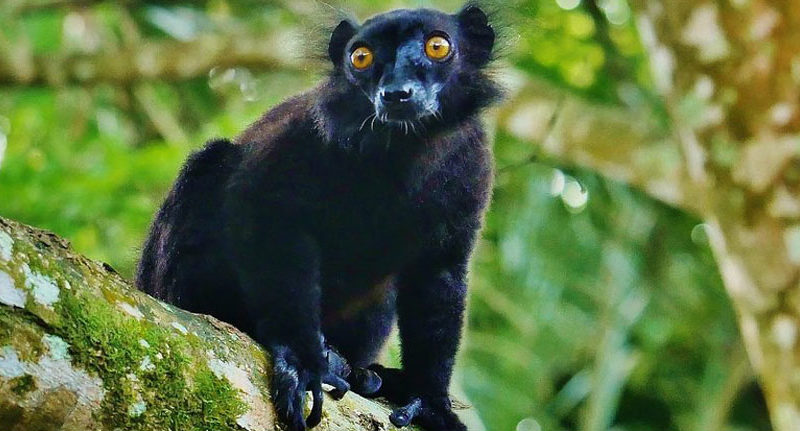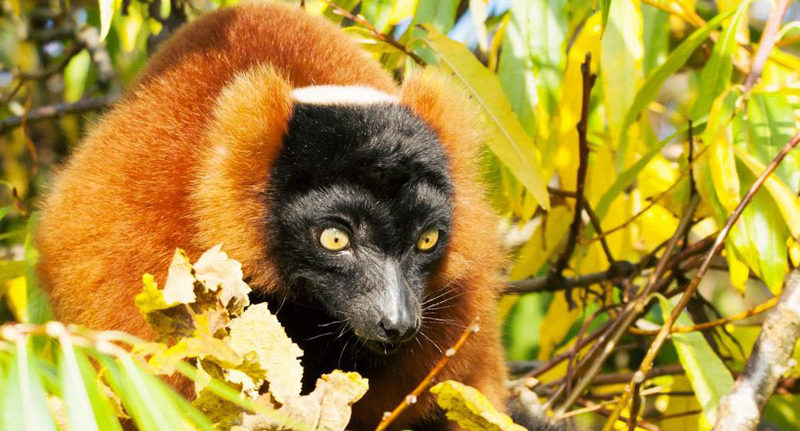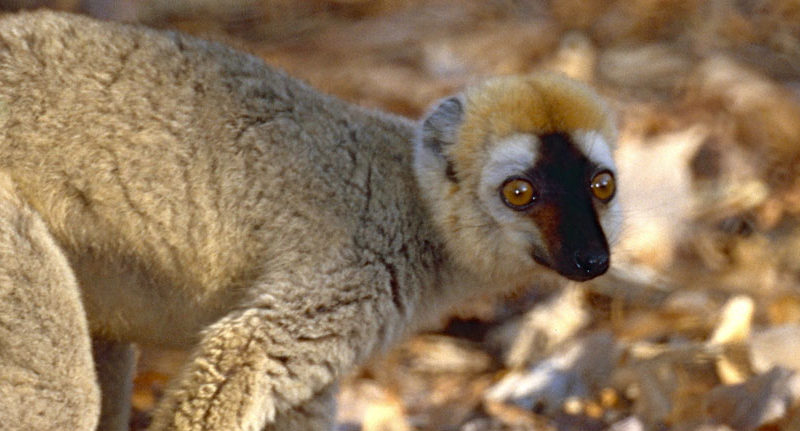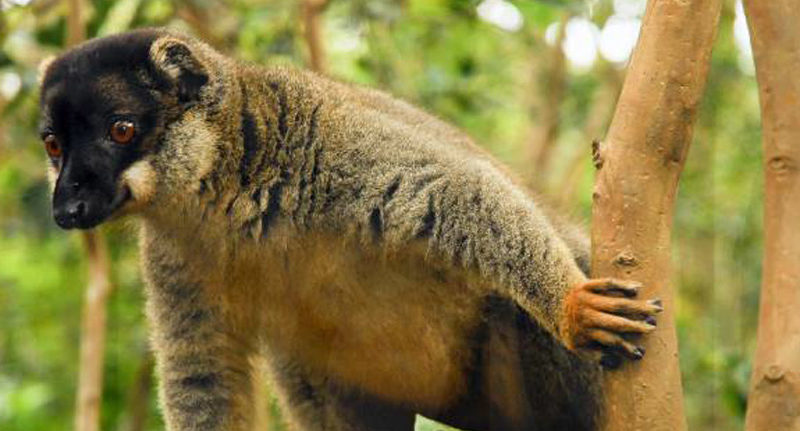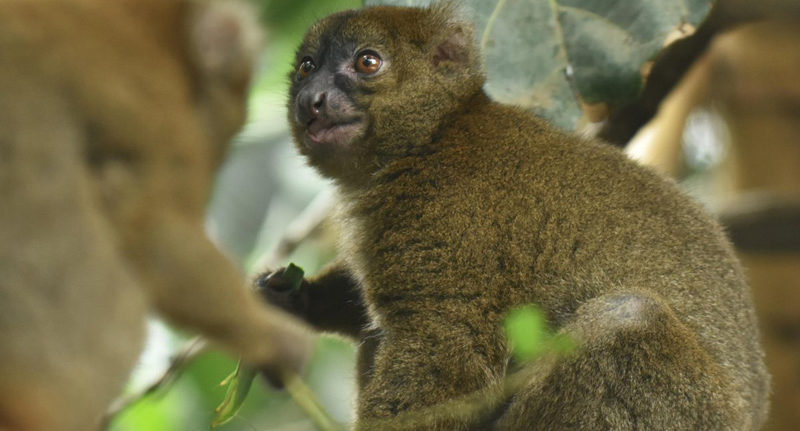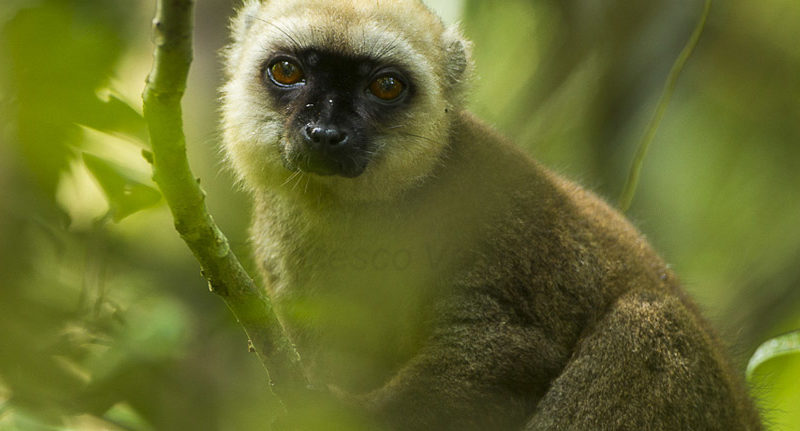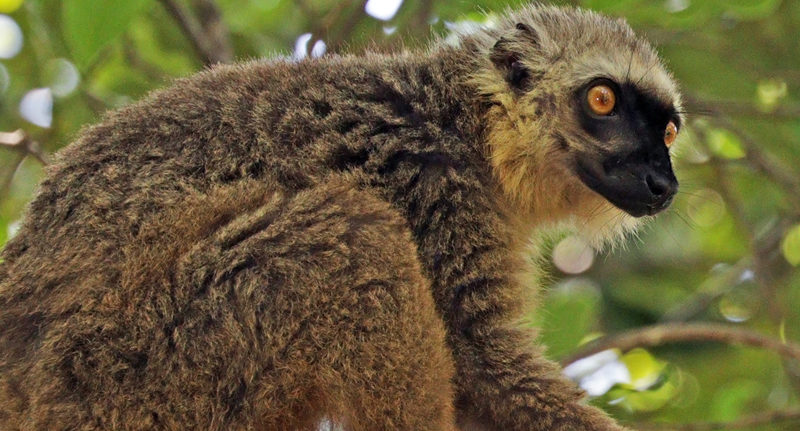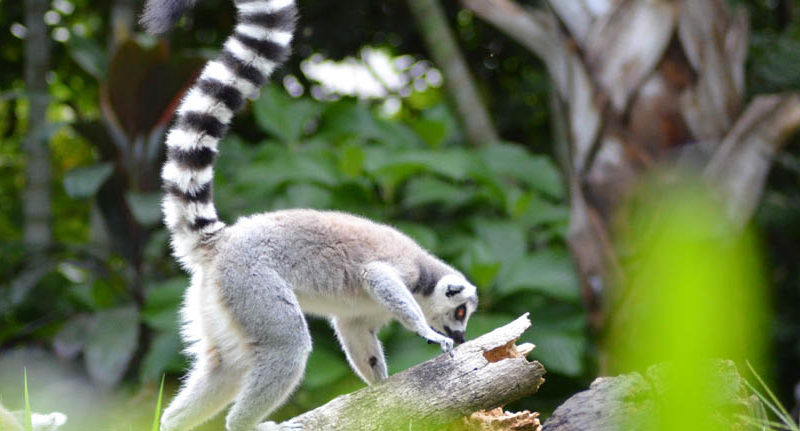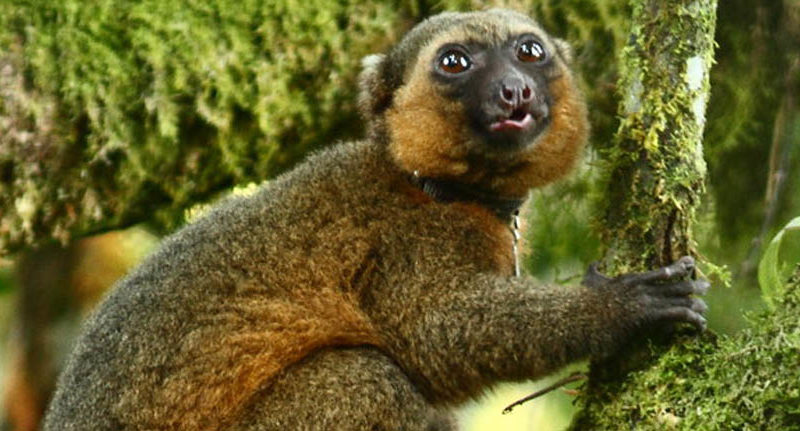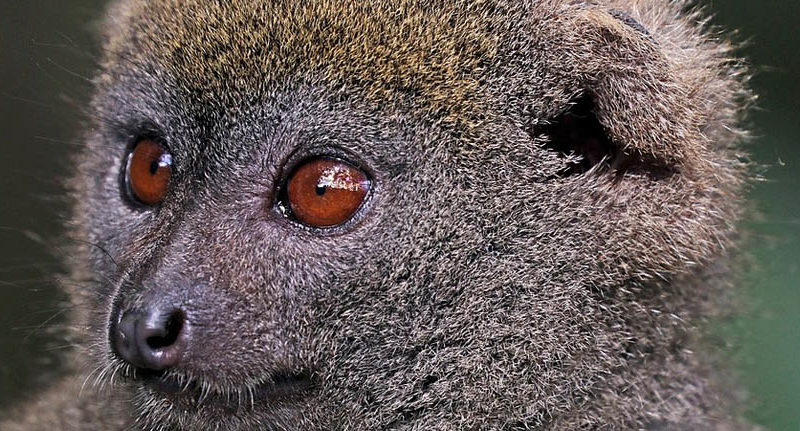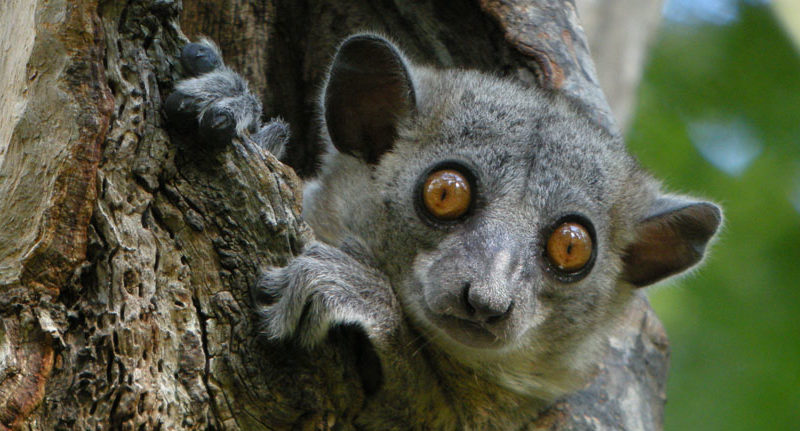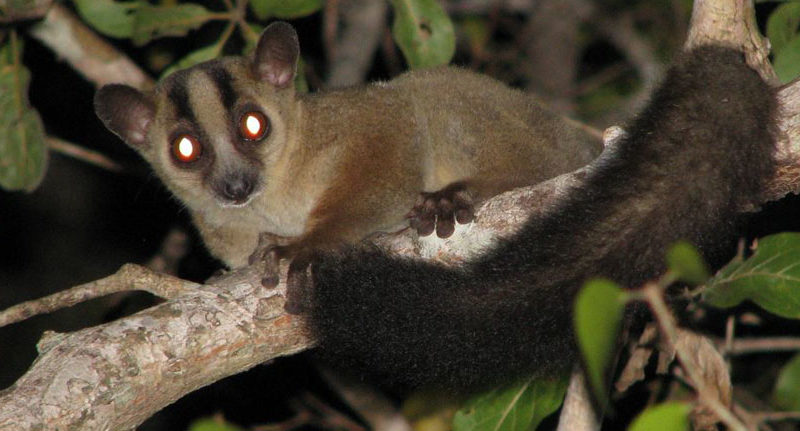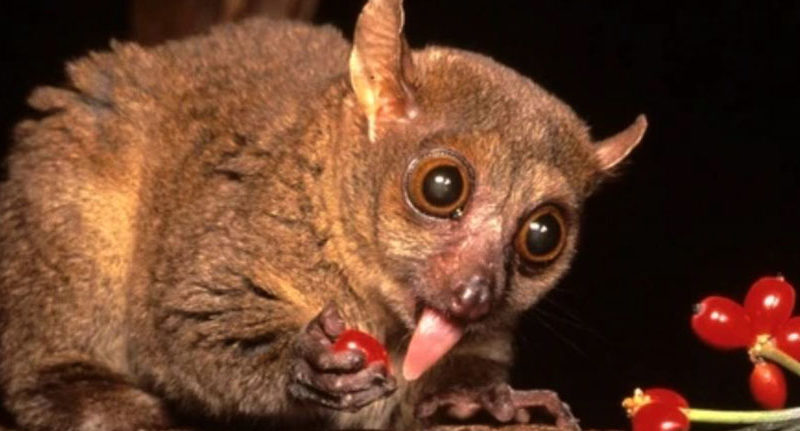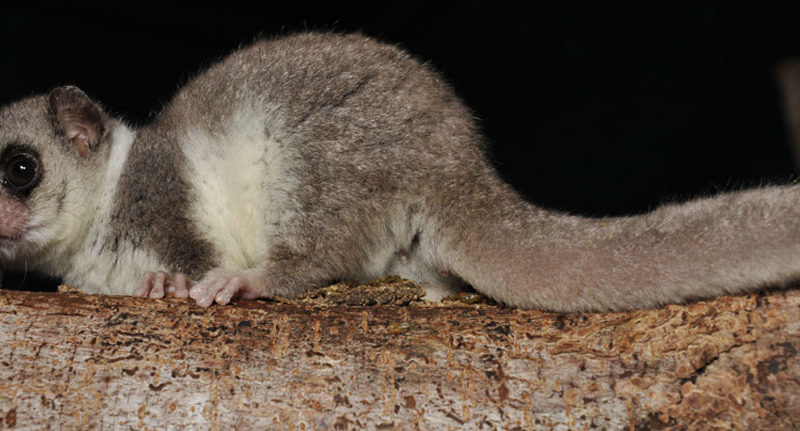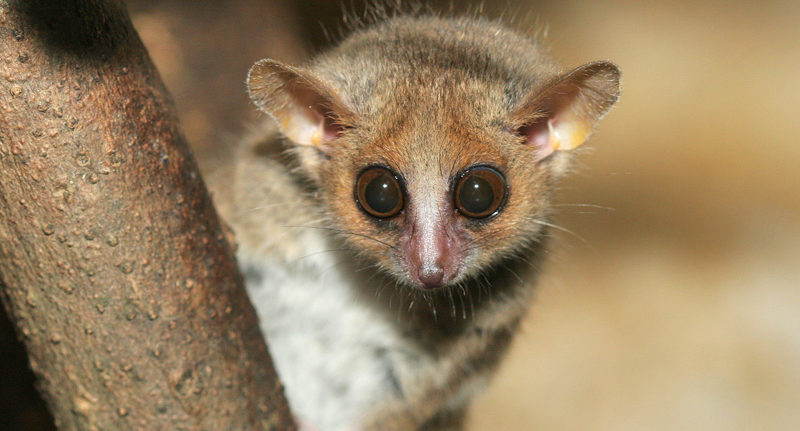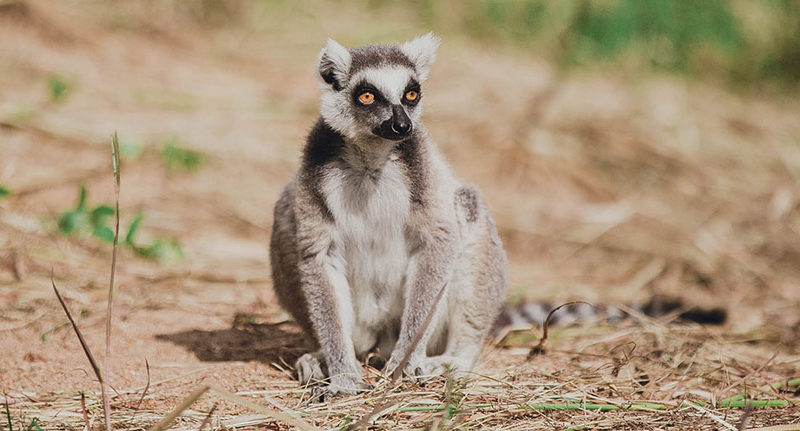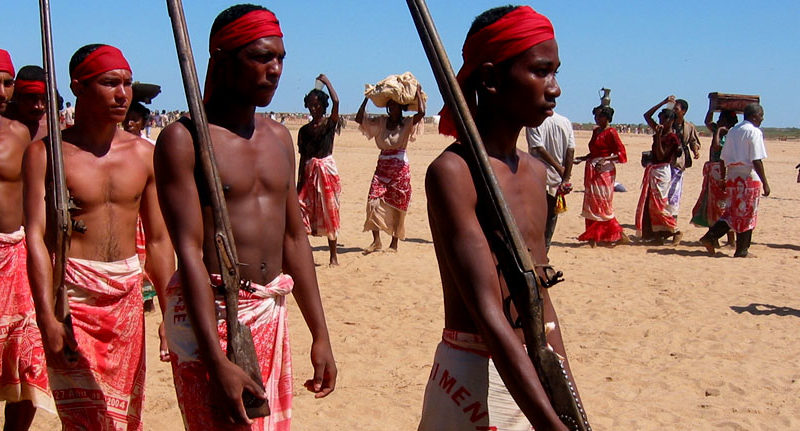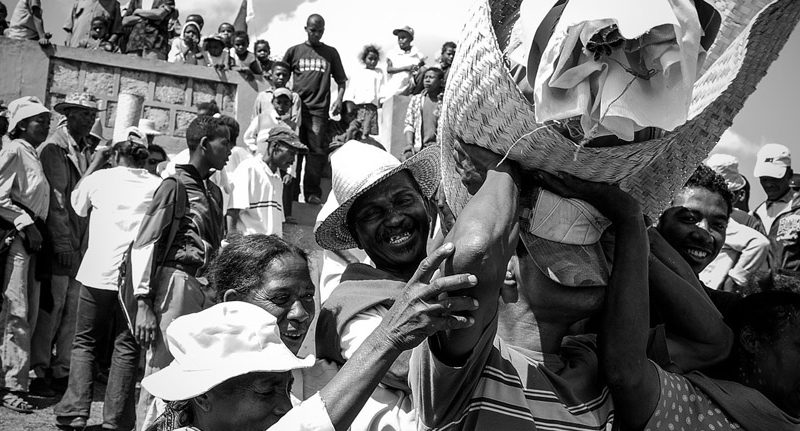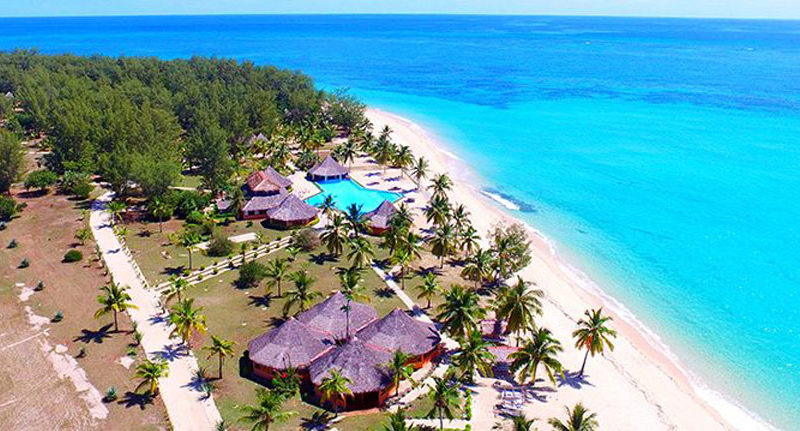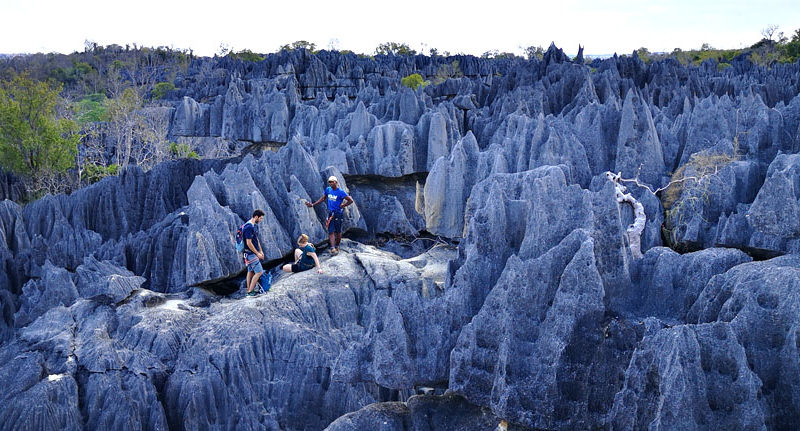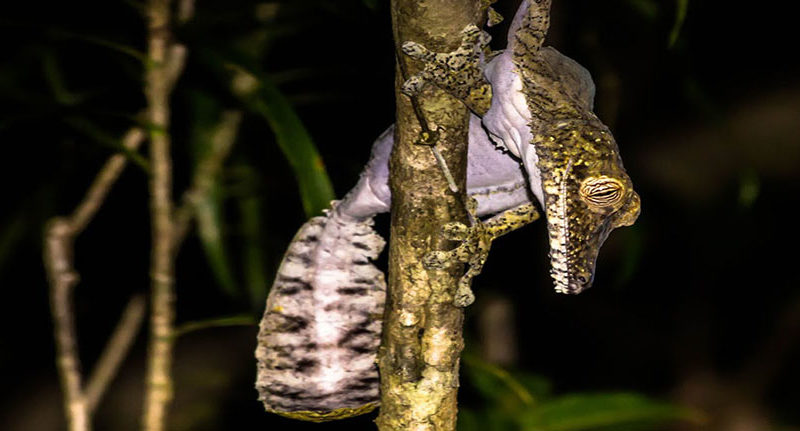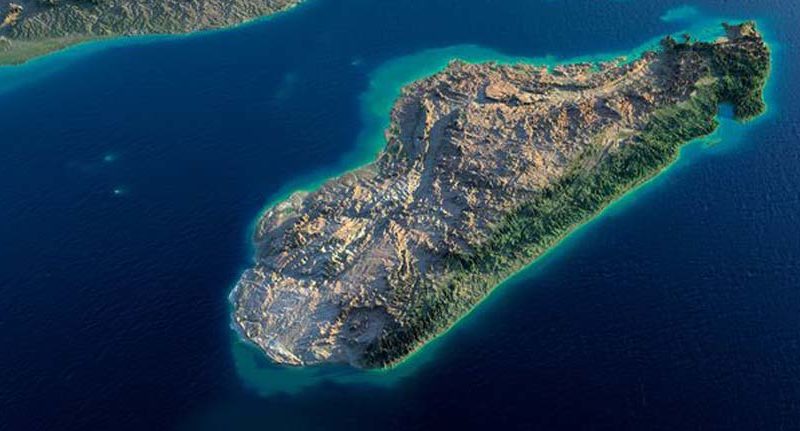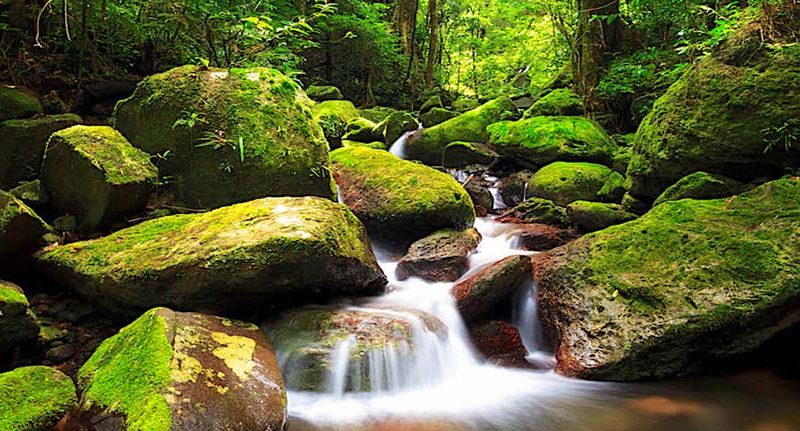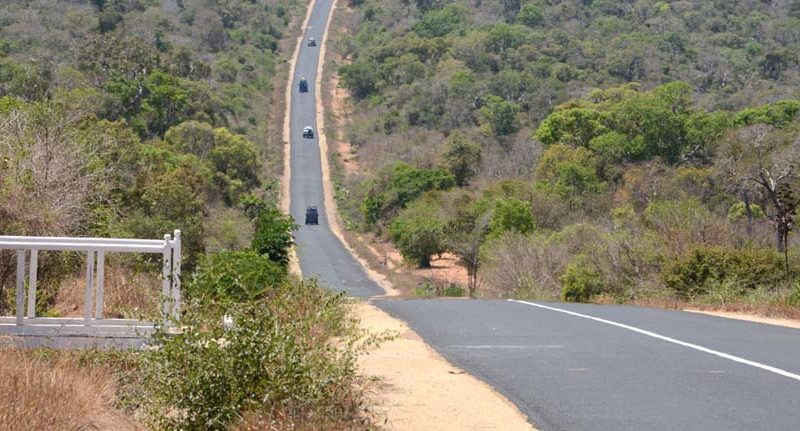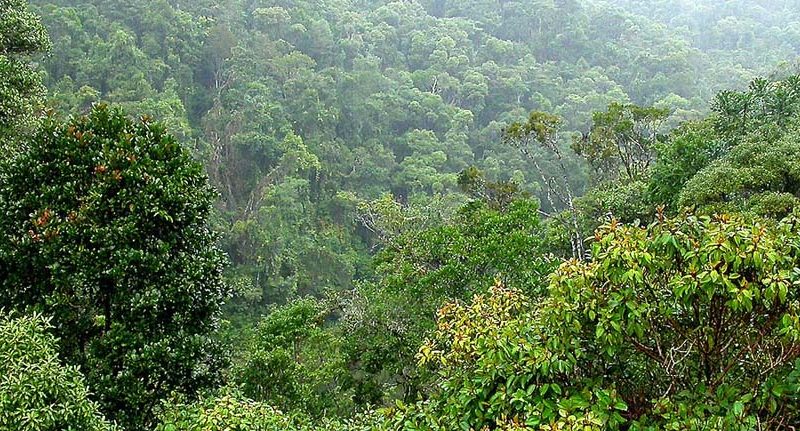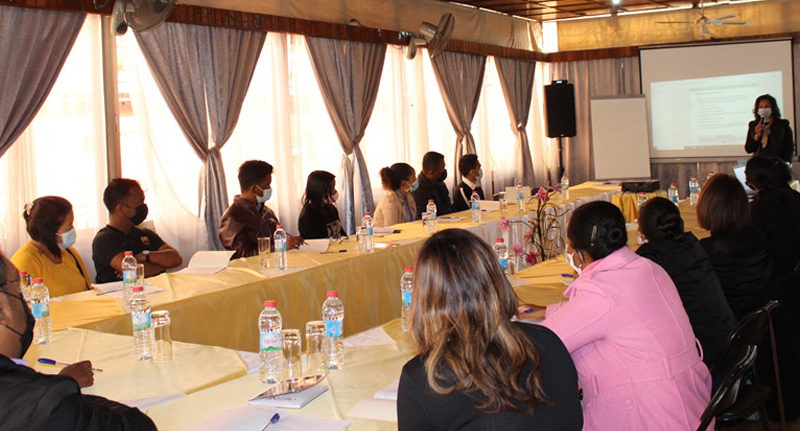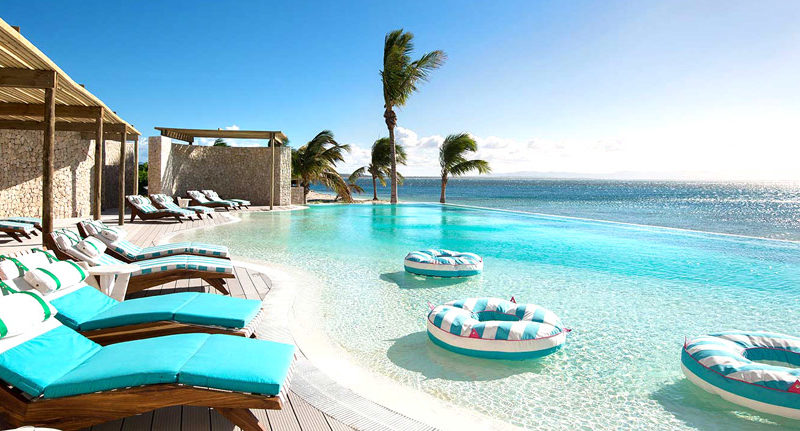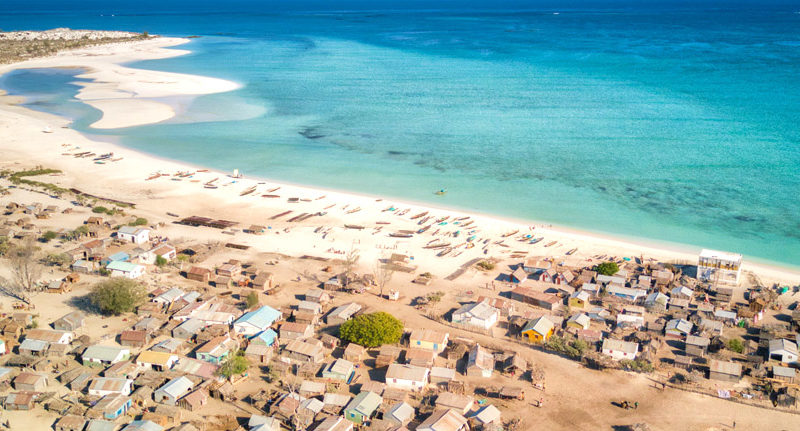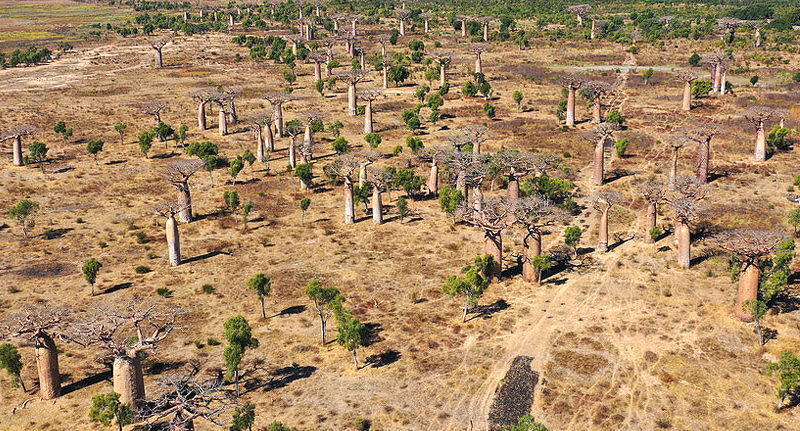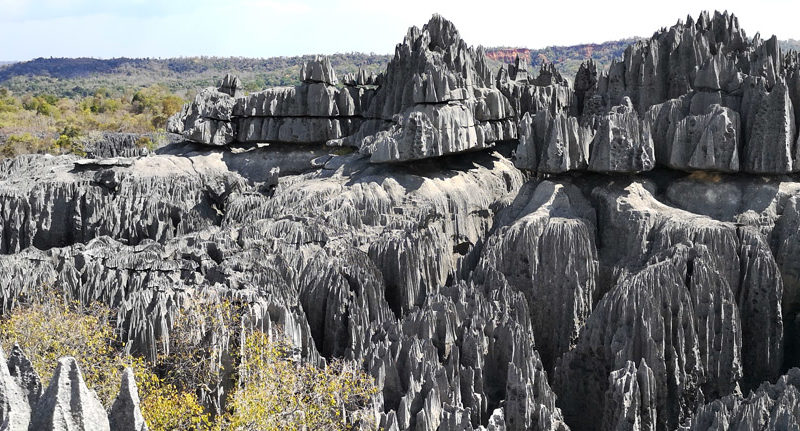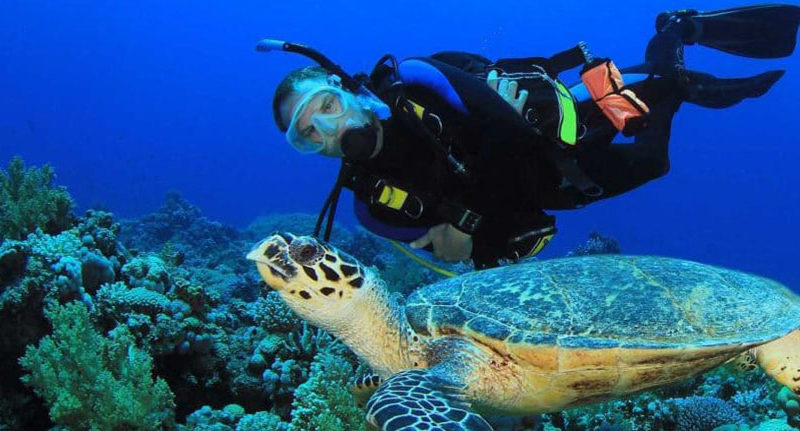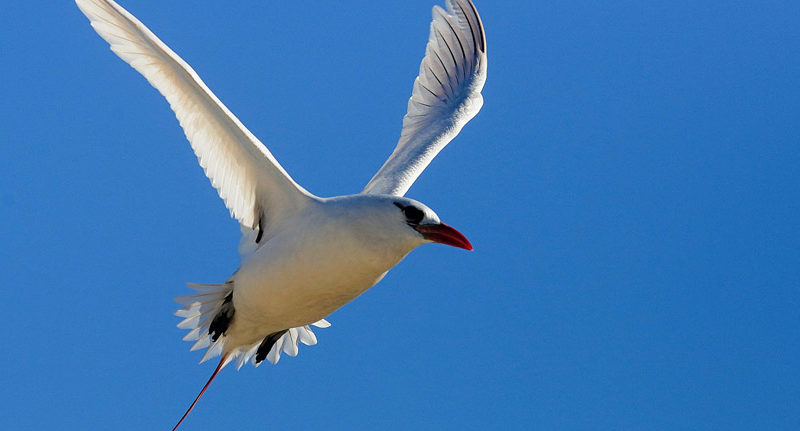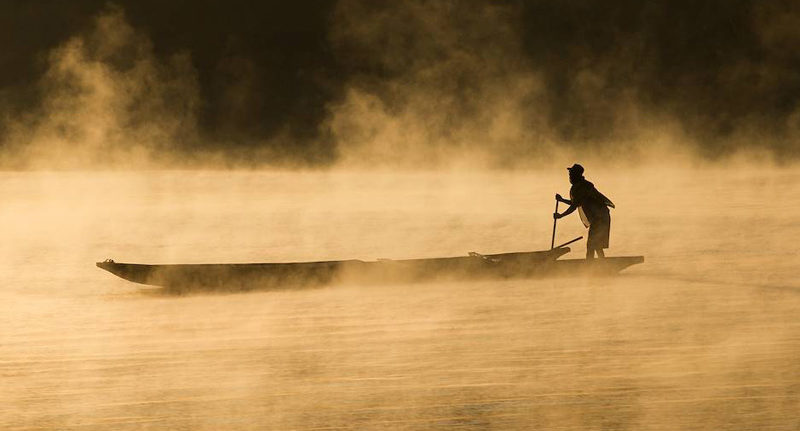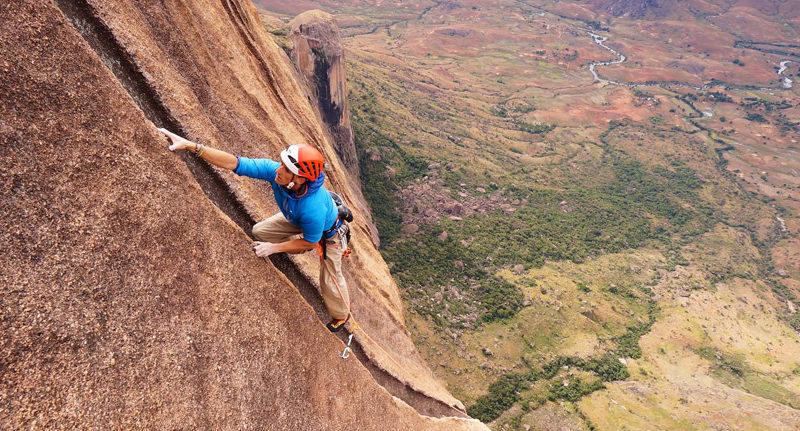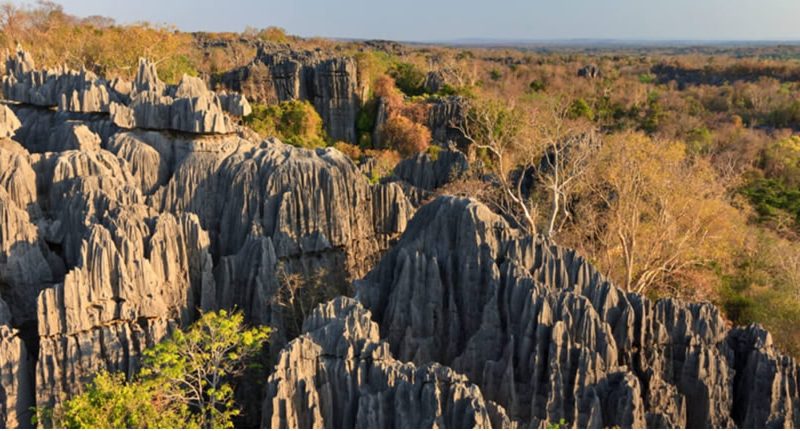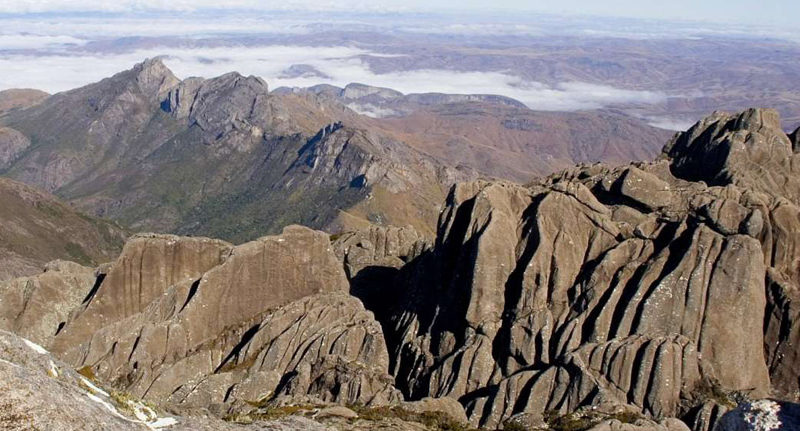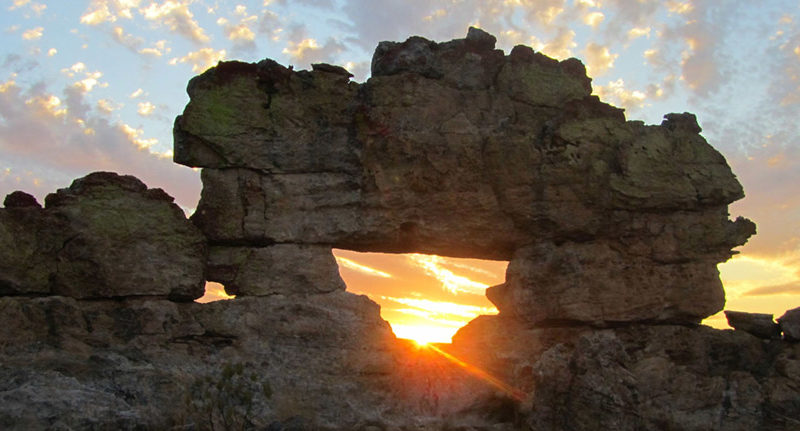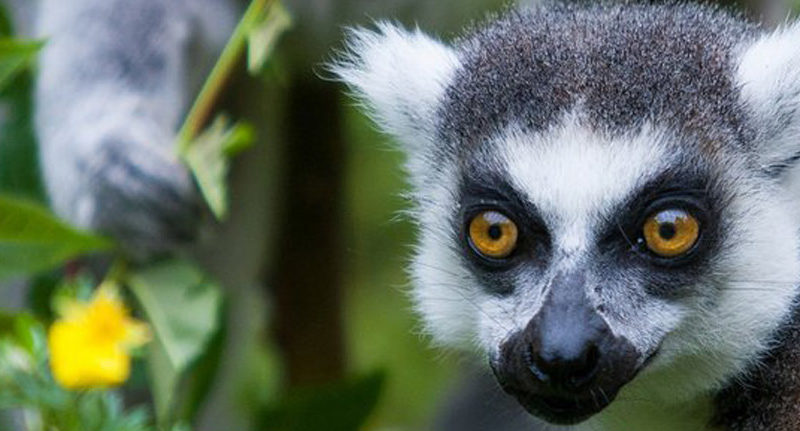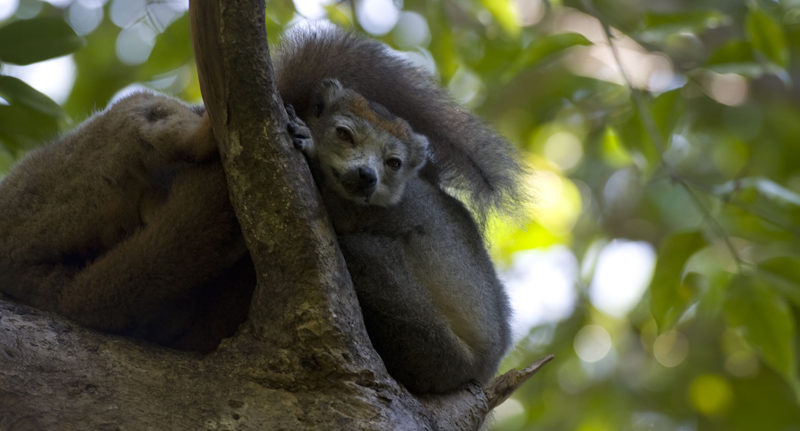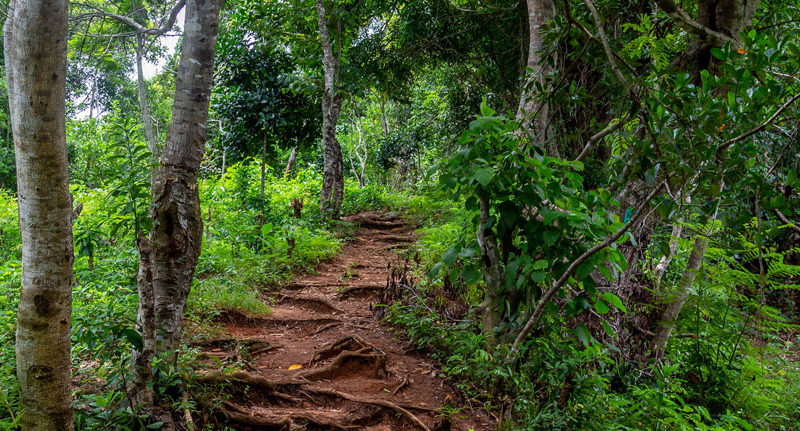Best Madagascar Group Tours & Adventures Are you ready for an unforgettable adventure in Madagascar? Look no further! We have curated a list of the best Madagascar group tours. That will take you on a journey through stunning landscapes. Unique wildlife encounters and vibrant cultures. Whether you’re looking for luxury or affordable options, our tours are designed to cater to
Continue readingMadagascar to Mauritius Group Tours | Explore Now
Madagascar to Mauritius Group Tours | Explore Now Embark on a remarkable journey from Madagascar to Mauritius with our group tours. And uncover the natural wonders and vibrant cultures of these captivating destinations in East Africa and the Indian Ocean. Whether you are a wildlife enthusiast, a beach lover, or an avid explorer of unique cultures. This extraordinary experience is
Continue readingMadagascar Luxury Safari Tours | All Organized by Private Helicopter and Private Charter Plane
Madagascar Luxury Safari Tours | All Organized by Private Helicopter and Private Charter Plane Experience the epitome of luxury and adventure with our exclusive flying safari tours in Madagascar. Imagine exploring breathtaking landscapes. Encountering unique wildlife. And immersing yourself in the beauty of this exotic destination. All from the comfort and convenience of a private helicopter or charter plane. Our
Continue readingWildlife safari tours in Madagascar
Madagascar Wildlife Safari Tours Welcome to the captivating world of wildlife safari tours in Madagascar! Embark on an extraordinary adventure filled with breathtaking encounters with some of the world’s most unique and fascinating animals. Madagascar, known as the “eighth continent,” is renowned for its incredible biodiversity. It is a home to a remarkable array of endemic species found nowhere else
Continue readingMadagascar Group Tours: Explore with us !
Madagascar Group Tours 2024 – 2025: Explore with the Company! Embark on an unforgettable journey with HT Agency Tours. As we venture across the stunning landscapes of Madagascar. Ready to join a group of adventurous souls on a voyage through lush rainforests. Past awe-inspiring baobabs, and into the heart of vibrant Malagasy culture? Our Madagascar tours are curated for those
Continue readingHistorical tours Madagascar for seniors
Historical tours Madagascar for seniors Embark on an unforgettable journey with HT Agency Tours. As we venture across the stunning landscapes of Madagascar. Our meticulously crafted Madagascar group safari tour package invites you to experience the island’s awe-inspiring biodiversity. Rich cultural tapestry, and breathtaking natural scenery over the course of 17 adventure-packed days. Discover the endless wonders of this unique
Continue readingCulinary tours Madagascar for seniors
Culinary tours Madagascar for seniors Embark on an unforgettable journey with HT Agency Tours as we venture across the stunning landscapes of Madagascar. Our meticulously crafted Madagascar group safari tour package invites you to experience the island’s awe-inspiring biodiversity. Rich cultural tapestry, and breathtaking natural scenery over the course of 17 adventure-packed days. Discover the endless wonders of this unique
Continue readingPhotography tours Madagascar for seniors
Photography tours Madagascar for seniors Join us at HT Agency Tours as we take you on a remarkable adventure through the awe-inspiring landscapes of Madagascar. Our carefully curated Madagascar group safari tour package is designed to cater to the needs of photography enthusiasts of all ages. Including seniors who have a passion for capturing the beauty of the world through
Continue readingBirding tours Madagascar for seniors
Birding tours Madagascar for seniors Embark on an unforgettable journey with HT Agency Tours. As we venture across the stunning landscapes of Madagascar. Our meticulously crafted Madagascar group safari tour package invites you to experience the island’s awe-inspiring biodiversity. Rich cultural tapestry, and breathtaking natural scenery over the course of 17 adventure-packed days. Discover the endless wonders of this unique
Continue readingWheelchair accessible Madagascar tours for seniors
Wheelchair accessible Madagascar tours for seniors Join HT Agency Tours as we venture across the stunning landscapes of Madagascar. A destination known for its awe-inspiring biodiversity, rich cultural tapestry. And breathtaking natural scenery. Our meticulously crafted Madagascar group safari tour package offers an immersive experience. That will leave you in awe over the course of 17 adventure-packed days. Wheelchair accessible
Continue readingComfortable accommodations Madagascar for seniors
Comfortable accommodations Madagascar for seniors Join HT Agency Tours as we explore the breathtaking landscapes of Madagascar. A truly unique destination that will leave you in awe. Our meticulously crafted Madagascar group safari tour package is designed to immerse you in the island’s awe-inspiring biodiversity. Rich cultural tapestry, and stunning natural scenery over the course of 17 adventure-packed days. From
Continue readingEasy pace Madagascar tours for seniors
Easy pace Madagascar tours for seniors Embark on an unforgettable journey with HT Agency Tours as we venture across the stunning landscapes of Madagascar. Easy pace Madagascar tours for seniors. Our meticulously crafted Madagascar group safari tour package invites you to experience the island’s awe-inspiring biodiversity. Rich cultural tapestry, and breathtaking natural scenery over the course of 17 adventure-packed days.
Continue readingAll-inclusive Madagascar tours for seniors
All-inclusive Madagascar tours for seniors Discover the stunning landscapes, awe-inspiring biodiversity. And rich cultural tapestry of Madagascar with HT Agency Tours. Our meticulously crafted Madagascar group safari tour package offers an unforgettable adventure for seniors. Over the course of 17 adventure-packed days, you’ll immerse yourself in the breathtaking natural scenery. Endless wonders of this unique destination. All-inclusive Madagascar tours for
Continue readingSmall group tours Madagascar for seniors
Small group tours Madagascar for seniors Embark on an unforgettable journey with HT Agency Tours as we venture across the stunning landscapes of Madagascar. Our meticulously crafted Madagascar group safari tour package invites you to experience the island’s awe-inspiring biodiversity. Rich cultural tapestry, and breathtaking natural scenery over the course of 17 adventure-packed days. Discover the endless wonders of this
Continue readingRainforest tours Madagascar for seniors
Rainforest tours Madagascar for seniors Join us at HT Agency Tours as we take you on a mesmerizing adventure through the stunning landscapes of Madagascar. Our meticulously crafted Madagascar group safari tour package is designed to offer you an unforgettable experience. Exploring the island’s awe-inspiring biodiversity, rich cultural tapestry. And breathtaking natural scenery over the course of 17 adventure-packed days.
Continue readingLemurs Madagascar for seniors
Lemurs Madagascar for seniors Discover the stunning landscapes of Madagascar as we invite you to join our meticulously crafted Madagascar group safari tour package. Over the course of 17 adventure-packed days. You’ll have the opportunity to immerse yourself in the awe-inspiring biodiversity. Rich cultural tapestry, and breathtaking natural scenery that this unique destination has to offer. Lemurs Madagascar for seniors.
Continue readingGentle hiking Madagascar for seniors
Gentle hiking Madagascar for seniors Embark on an unforgettable journey with HT Agency Tours as we venture across the stunning landscapes of Madagascar. Our meticulously crafted Madagascar group safari tour package invites you to experience the island’s awe-inspiring biodiversity. Rich cultural tapestry, and breathtaking natural scenery over the course of 17 adventure-packed days. From lush rainforests to the otherworldly spiny
Continue readingCultural tours Madagascar for seniors
Cultural tours Madagascar for seniors Join HT Agency Tours on a once-in-a-lifetime journey across the breathtaking landscapes of Madagascar. Our meticulously crafted Madagascar group safari tour package is designed especially for seniors. Offering an immersive experience into the island’s awe-inspiring biodiversity. Rich cultural tapestry, and breathtaking natural scenery. Cultural tours Madagascar for seniors. Discover the endless wonders of this unique
Continue readingWildlife watching Madagascar for seniors
Wildlife watching Madagascar for seniors Join us on a wildlife adventure as we explore the stunning landscapes of Madagascar. Our meticulously crafted group safari tour package offers a unique opportunity for seniors to witness the awe-inspiring biodiversity. Rich cultural tapestry, and breathtaking natural scenery of this magnificent island. Over the course of 17 adventure-packed days, you will discover the endless
Continue readingAdventure tours Madagascar for seniors
Adventure tours Madagascar for seniors Embark on an unforgettable journey with HT Agency Tours as we venture across the stunning landscapes of Madagascar. Our meticulously crafted Madagascar group safari tour package invites you to experience the island’s awe-inspiring biodiversity, rich cultural tapestry. And breathtaking natural scenery over the course of 17 adventure-packed days. Discover the endless wonders of this unique
Continue readingActive senior tours Madagascar
Active senior tours Madagascar Are you ready for an adventure of a lifetime? Join HT Agency Tours as we explore the mesmerizing landscapes of Madagascar. Our meticulously crafted Madagascar group safari tour package is designed to immerse you in the island’s awe-inspiring biodiversity. Rich cultural tapestry, and breathtaking natural scenery. Get ready for 17 adventure-packed days filled with excitement and
Continue readingSenior tours Madagascar
Senior tours Madagascar Join us on an incredible adventure as we explore the breathtaking landscapes of Madagascar. Senior tours Madagascar. With our meticulously crafted Madagascar group safari tour package. We invite you to experience the awe-inspiring biodiversity, rich cultural tapestry. And captivating natural scenery of this unique destination. Over the course of 17 adventure-packed days, you will have the opportunity
Continue readingMadagascar tours for seniors
Madagascar tours for seniors Are you ready for an extraordinary adventure, tailor-made for senior travelers? With HT Agency Tours, embark on a mesmerizing 17-day journey through the breathtaking landscapes of Madagascar. Our meticulously crafted Madagascar group safari tour package invites you to discover the awe-inspiring biodiversity. Rich cultural tapestry, and breathtaking natural scenery of this unique destination. Tours for seniors in
Continue readingFlying Safari in Madagascar
Flying Safari in Madagascar Embark on an extraordinary journey that soars beyond the ordinary—a flying safari in Madagascar. This ultimate luxury safari lets you glide across the diverse Malagasy landscapes, delivering sheer magnificence from the skies. Imagine peeking out from your helicopter to observe the ochre hues of the Tsingy de Bemaraha or flying low over the lush rainforests that are
Continue readingSerengeti Great Migration in Tanzania
Great migration in Tanzania Are you ready for a real adventure? Imagine witnessing one of the most spectacular natural wonders on Earth – the Serengeti Great Migration in Tanzania. This awe-inspiring event captivates nature enthusiasts from around the world, as millions of wildebeests, zebras, and other animals journey across the vast Serengeti plains in search of fresh grazing grounds. The
Continue readingExplore Tanzania Group Safari Tours | Book Now
Explore Tanzania Group Safari Tours | Book Now Are you ready for an unforgettable wilderness adventure? Look no further than Tanzania Group Safari Tours with HT Agency Tours. Experience the breathtaking beauty of Tanzania’s wildlife and landscapes while being guided by expert professionals. Whether you’re a seasoned adventurer or a first-time explorer. Our group safari tours offer the perfect blend of excitement and relaxation. Don’t miss
Continue readingTanzania Chimpanzee Trekking Tours
Unforgettable Encounters: Tanzania Chimpanzee Trekking Tours with HT Agency Tours Embark on an extraordinary journey into the heart of Tanzania’s lush rainforests. And witness the captivating lives of chimpanzees in their natural habitat. Immerse yourself in the raw beauty of Africa. Forge unforgettable memories with HT Agency Tours’ expertly crafted Tanzania Chimpanzee Trekking Tours. Unveiling the Secrets of the Mahale
Continue readingMadagascar Wildlife
Madagascar Wildlife Tours Welcome to an extraordinary adventure that will take you deep into the heart of Madagascar’s rich biodiversity and breathtaking landscapes. Embark on a luxury wildlife safari and discover a world where lemurs leap from treetop to treetop, where pristine beaches meet lush rainforests. And where incredible rock formations stand as monuments to the island’s geological wonders. Madagascar Wildlife
Continue readingMadagascar group safari | Great Adventure in 12 days
Madagascar group safari | Great Adventure in 12 days Embark on an unforgettable journey with HT Agency Tours as we venture across the stunning landscapes of Madagascar. Our meticulously crafted Madagascar group safari tours package invites you to experience the island’s awe-inspiring biodiversity. Rich cultural tapestry, and breathtaking natural scenery over the course of 12 adventure-packed days. Discover the endless wonders of this
Continue readingWorld luxury travel
World luxury travel Are you ready to embark on a journey of opulence and indulgence? Welcome to the world of luxury travel, where bespoke itineraries and exclusive experiences await. Whether you crave a sun-soaked retreat on a private island or a cultural immersion in a metropolitan city, luxury travel promises to elevate every moment of your adventure. At its core,
Continue readingTanzania Safari & Zanzibar Bliss
Unleash Your Wildest Dreams: Tanzania Safari & Zanzibar Bliss with HT Agency Tours Experience the untamed wilderness of Tanzania and the idyllic paradise of Zanzibar with HT Agency Tours. Tanzania Safari & Zanzibar. Immerse yourself in an unforgettable adventure. Crafted to awaken your senses and leave you with memories that last a lifetime. Embark on an Epic Tanzania Safari &
Continue readingKilimanjaro Trekking Tours
Conquer the Roof of Africa: Unforgettable Kilimanjaro Trekking Tours with HT Agency Tours Embark on a life-changing adventure and summit the awe-inspiring Mount Kilimanjaro with HT Agency Tours! We offer meticulously crafted Kilimanjaro trekking tours designed to cater to all levels of experience, fitness, and budget. Whether you’re a seasoned trekker seeking a challenging ascent or a first-timer yearning for
Continue readingSerengeti Safari Tours
Embark on an Unforgettable Adventure: Serengeti Safari Tours with HT Agency Tours Unleash your inner explorer and witness the raw beauty of Africa with HT Agency Tours’ captivating Serengeti Safari experiences. Immerse yourself in the heart of Tanzania’s vast plains. Teeming with iconic wildlife and breathtaking landscapes. Our meticulously crafted tours cater to every desire. From budget-friendly expeditions to luxurious
Continue readingTanzania All-Inclusive Safaris
Unveiling Tanzania’s Wonders: All-Inclusive Safaris with HT Agency Tours Embrace the untamed beauty and thrilling encounters of Tanzania with HT Agency Tours’ all-inclusive safaris. Immerse yourself in the heart of Africa, where majestic landscapes meet diverse wildlife in a symphony of unforgettable moments. Why Choose Tanzania All-Inclusive Safaris? Unwind and explore: Leave the logistics to us! Meals, accommodation, game drives, and park fees are
Continue readingTanzania Luxury Safaris
Embark on an Unearthly Adventure: Tanzania Luxury Safaris with HT Agency Tours Unleash the spirit of exploration with HT Agency Tours’ expertly crafted Tanzania Luxury Safaris. Immerse yourself in the untamed beauty of Africa, where majestic wildlife roams freely and unforgettable moments bloom like vibrant wildflowers. Why Choose HT Agency Tours? Unparalleled Expertise: Our seasoned guides, boasting years of experience and deep
Continue readingTanzania Honeymoon Safari
Unleash Your Wildest Dreams: Tanzania Honeymoon Packages with HT Agency Tours Embark on an unforgettable adventure with your soulmate. Tanzania Honeymoon Safari. Fueled by the untamed beauty and vibrant energy of Tanzania. HT Agency Tours curates exceptional honeymoon packages designed to ignite your senses. Rekindle romance and etch memories that last a lifetime. Why Choose Tanzania for Your Honeymoon? Unparalleled
Continue readingTanzania Safaris for Families
Unforgettable Adventures Await: Tanzania Safaris for Families with HT Agency Tours Embark on a life-changing journey with your loved ones in the heart of Tanzania. Imagine witnessing the Great Migration thundering across the Serengeti plains, spotting majestic elephants bathing in Ngorongoro Crater, or hearing the playful chatter of chimpanzees in Gombe Stream National Park. Tanzania Safaris for Families with HT
Continue readingTanzania Safaris for Seniors | HT Agency Tours
Embark on an Unforgettable Adventure: Tanzania Safari for Seniors with HT Agency Tours Dreaming of witnessing the majestic herds of the Great Migration. Encountering playful elephants, and gazing upon the endless plains of the Serengeti? A Tanzania safari is an experience unlike any other. And HT Agency Tours is here to curate the perfect adventure for seniors seeking an unforgettable
Continue readingTanzania Wildlife Safari | HT Agency Tours
Tanzania Wildlife Safari: A Guide to the Ultimate Adventure In this article, we will provide you with a comprehensive guide to planning and enjoying your Tanzania wildlife safari. We will cover the following topics: Why choose Tanzania for your wildlife safari When to visit Tanzania for the best wildlife viewing Where to go in Tanzania for the most diverse and
Continue readingWhat to Expect For Your Tanzania Wildlife Safari
Unforgettable Encounters Await: What to Expect For Your Tanzania Wildlife Safari Dreaming of an adventure teeming with iconic wildlife, breathtaking landscapes, and immersive experiences? A Tanzania wildlife safari ticks all the boxes! But before embarking on this transformative journey, prepare to be amazed by what awaits (Expectation in Tanzania Safari): Where to go in Tanzania | HT Agency Tours Why
Continue readingHow to prepare for Tanzania wildlife safari
Unforgettable Encounters Await: Your Guide to Preparing for a Tanzania Wildlife Safari The vast plains of the Serengeti, the majestic Ngorongoro Crater, the vibrant coral reefs of Zanzibar – Tanzania beckons with an unparalleled wildlife adventure. But before you embark on this incredible journey, thorough preparation is key to maximizing your experience. How to prepare for Tanzania wildlife safari? Here’s
Continue readingWhere to go in Tanzania | HT Agency Tours
Unleash Your Inner Explorer: Where to Encounter Tanzania‘s Most Dazzling Wildlife Tanzania, the jewel of East Africa, beckons with landscapes as diverse as its wildlife. From the iconic Serengeti plains teeming with wildebeest to the misty volcanic slopes of Ngorongoro Crater sheltering endangered rhinos, a Tanzanian safari promises unforgettable encounters. But where do you go for the most diverse and
Continue readingWhen to visit Tanzania for the best wildlife viewing
When to Visit Tanzania for the Best Wildlife Viewing: Your Ultimate Guide Unforgettable encounters with majestic beasts await in Tanzania, a land teeming with diverse wildlife. But when is the ideal time or the best time to embark on your safari adventure for a Tanzania Wildlife Viewing? This guide reveals the secrets to maximizing your wildlife viewing experience, tailored to
Continue readingWhy choose Tanzania for your wildlife safari
Unleash Your Inner Explorer: Why Choose Tanzania for Your Unforgettable Wildlife Safari Dreaming of an adventure teeming with iconic wildlife, breathtaking landscapes, and immersive cultural experiences? More over, why Tanzania wildlife safari? Look no further than Tanzania, the jewel of East Africa, where your wildest safari dreams become reality. Unparalleled Wildlife Diversity: Witness the awe-inspiring spectacle of the Great Migration,
Continue readingMadagascar | Affordable Adventures
Unleash Your Inner Explorer: Affordable Adventures with Madagascar Budget Tours & Safaris Dreaming of an African adventure without breaking the bank? Opt for Madagascar budget tours Look no further than Madagascar, a wildlife haven where otherworldly landscapes, unique cultures, and budget-friendly tours await. Unlike its pricier neighbor, Tanzania, Madagascar offers thrilling experiences at a fraction of the cost, making it
Continue readingMadagascar Wildlife Tours & Safari
Madagascar Wildlife Tours & Safari: A Unique and Unforgettable Experience Madagascar wildlife tour & safari is a land of wonders, where you can encounter some of the most amazing and diverse wildlife on the planet. From the iconic lemurs and chameleons to the rare and endangered fossa and aye-aye. Madagascar is home to over 200,000 species of animals and plants,
Continue readingMadagascar Tours for Seniors | HT Agency Tours
Madagascar Tours for Seniors: A Comprehensive Guide Madagascar, the mystical island off Africa’s southeastern coast, beckons seniors to explore its diverse landscapes, vibrant culture, and unique wildlife. In this extensive guide, we’ll delve into every facet of Madagascar tours for seniors, ensuring an enriching and unforgettable experience. Why Choose Madagascar? Biodiversity Extravaganza: Madagascar is a living laboratory of evolution.
Continue readingMadagascar Group Tours 2024 | HT Agency Tours
Discover Madagascar in Group Tours departing in 2024 A Journey of Wonders Madagascar, often referred to as the “eighth continent,” is a land of extraordinary biodiversity, stunning landscapes, and vibrant culture. Located off the southeastern coast of Africa, this island paradise beckons travelers with its lemurs, baobabs, and otherworldly flora and fauna. If you’re seeking an adventure that combines
Continue readingMadagascar Flying Safari | Private Charter Plane
Madagascar luxury flying safaris 2024 & 2025 HIGHLIGHTS This Madagascar Flying Safaris Tours 2024 & 2025 will take you from Antananarivo to Andasibe, Tsingy of Bemaraha, Morondava (Baobabs Avenue), Isalo and Anjajavy. Andasibe National Park (Madagascar Flying Safaris 2024 & 2025) Andasibe National Park is a part of Toamasina. It is 1.5 kilometers from Andasibe, 140 kilometers from Antananarivo, and
Continue readingMadagascar Wildlife Tours & Safari
Madagascar Wildlife Tours & Safari | Nature & Culture trips. The Indri Indri is from the Indridae family. The adult size can reach 75 to 90 cm, the largest of the current lemurs. It is the only one which has just a tiny tail. Weighing around 8 to 12 kg and can live up to 40 years. It lives in the
Continue readingTop Madagascar Group Tours 2024 | HT Agency Tours
Opt for the Madagascar group tours safari Join the Madagascar group tours safari to discover all the best spots that symbolize the big hisland. What is Madagascar group tour safari It’s in our nature to venture forth and discover the vastness of the globe. The only drawback is that it’s a very huge space. Additionally, there are numerous languages you
Continue readingAfrica safari tours & Holiday | HT Agency Tours
Africa safari tours HT Agency Tours is a professional tours company that willing to lead you and make you discover the entier Africa Continent with Luxury services across the best and unforgetable destinations for your holiday “Africa safari tours”: Tanzania, Uganda, Kenya, Egypt, Morocco, South Africa, … Africa Is the world’s second-largest and second-most populous continent after Asia. Attractive in
Continue readingMadagascar luxury safari tour
Opt for Madagascar luxury safari tour For your next trip, opt for Madagascar luxury safari tour and discover the adventures that awaiting you in the entire island: excursions, diving, luxury safaris, nature reserve visits… Diégo Suarez in the menu of Madagascar luxury safari tour Diégo Suarez is a hidden gem on the Big Island that promises unforgettable adventures. Situated
Continue readingTourism: Madagascar in 2024
Tourism: Find out why choosing Madagascar in 2024 Opting for Madagascar Tours & Travel is another way to escape and grow. This allows, in fact, to discover new countries, cultures, and many other surprises. And for that, Madagascar has something to surprise you. The Red Island, a destination you should never miss Madagascar, also known as the Red Island,
Continue readingTravel to Tanzania
Travel to Tanzania, the essentials Is a Tanzania safari tours worthy? Take a look at the exceptional parks and reserves of Tanzania. Rich in a wide variety of landscapes of plains and savannahs, Tanzania is today an increasingly popular destination. Its particularity lies, moreover, in the fact that it shelters a true paradise of African fauna. From North to South,
Continue readingWhy Madagascar
Outstanding Madagascar The capital of Madagascar Antananarivo is the national capital and home to most travellers in Madagascar. Madagascar Luxury Travel & Tour. There are no tourist attractions to speak of in Antananarivo. A city that two million people call home. For some it is part of its appeal. Madagascar luxury travel. Tana has been the seat of Malagasy power
Continue readingBe part of the Adventure
Live the unique experience Be comfortable Multi-story hotel behemoths? Not on our trip. Travel with connectivity, beauty and authenticity that can only be found in local accommodation, transport and local restaurants. On the other end, this also allows us to stay in a luxury lodges, hotels and eat at restaurants with fewer people, this is why our group tour &
Continue readingGroup tours & travel | HT Agency Tours
Madagascar Group tours & Travel experience Your kind of adventure in a Group tours & travel Are you a solo traveler, couple or family? Join our Madagascar small Group tours & Travel departures packages for a wonderful and adventurous getaway. Would you like to trek to the dry or humid Africa area? For this we have an organized group adventure. Would
Continue readingîle aux parfums
Discover Nosy Be through our Madagascar tours & travel packages A paradise accessible to all. Nosy Be is an archipelago composed of several small islands easily accessible and as authentic as each other. Among the best known are Nosy Komba, Nosy Tanikely, Nosy Iranja and Nosy Sakatia. HT Agency Tours will make you discover the authenticity of the country on
Continue reading6 Best Madagascar Tours & Safari Packages in 2022/2023
12 DAYS MADAGASCAR DISCOVERING TOUR PACKAGES – $3080 BEST MADAGASCAR TOURS PACKAGES FOR SENIORS OVER 50s – $5625 GREAT HIGHLIGHT MADAGASCAR TOUR PACKAGE – $3670 LUXURY ADVENTURE MADAGASCAR TOUR PACKAGES MIAVANA – $23135 THE WORTH OF MADAGASCAR – LUXURY TOUR PACKAGES – $13200 NOSY BE MADAGASCAR TOUR PACKAGES – $1182 Madagascar is numerous attractions and it is one of the
Continue readingThe Best Madagascar tour operators and travel Agencies in 2022/2023
View the Tour Package Details People love to travel and explore the wildlife and get to know more about nature. However, this experience can only be hyped up when you get the best Madagascar tour operators. best tour operator in Madagascar; There are numerous English tour guides that you will come across but only the ones that have the right knowledge
Continue readingFind the Top madagascar small group tour departures in 2024/2025
View the Group Tour Package Details What is a Madagascar group tour? One of the finest ways to understand this enigmatic island is through a Madagascar group tour. Traveling is notoriously difficult, but on a group vacation, the planning is taken care of, the transportation and lodging are planned, and you won’t have to worry about the language barrier. Finding
Continue readingThe Best Madagascar Luxury Safari & Tour Package in 2022/2023
If you are looking for luxury then Madagascar luxury safari is your oyster and where to find its pearls is up to you. For relaxing beach bliss, cocktails and massages, look no further than the luxury lodges around Nosy Be, Mahajanga and Antsiranana. If you are fascinated by the unique fauna and flora of Madagascar, you will find that almost
Continue readingTop Madagascar Tours for Seniors and Over 50s 2024
Madagascar Tours for Seniors Accept the opportunity to spend a memorable vacation in Madagascar tours for seniors in 2024/2025 with other adventurous travelers aged 50 and above! probably in a small group tour of seniors. On the incredible routes, you’ll pass through well-known Madagascar top destinations such as Antananarivo, Antsirabe, and other destinations you wish to travel to. Download a Free
Continue readingMADAGASCAR HEALTH MEASURES AND RESUMPTION OF FLIGHTS
The authorities decided yesterday to relax health measures for entry into Malagasy territory and to authorize the resumption of several flights from other countries if previously they were quite restricted. The objective is thus to reduce the price of plane tickets which had become unaffordable since the health crisis. Hotel quarantine for passengers arriving from abroad will no longer be
Continue readingNOSY HARA
Located 34 km from Antsiranana to Mangaoko and Ampasindava, Hara National Park belongs to the coastal and marine ecoregion of northern and western of Madagascar. With its 125,471 ha, this archipelago of coral islets offers a variety of habitats with coral reefs, mangroves, herbaceous areas : “Tsingy”. There are also nesting sites and feeding areas of endangered species such as
Continue readingANKARAFANTSIKA
How to get there When you travel to madagascar, do not forget to visit Ankarafantsika National Park. Ankarafantsika is located on the National Road 4 (RN4) connecting Antananarivo and Mahajanga. Duration: 8 hours. Distance: 450 km from Antananarivo and 115 km south of Mahajanga. Historical The term ankarafantsika is a transformation of the name which means too and evokes the
Continue readingMADAGASCAR REPTILES
Almost 400 species of reptile have been described from Madagascar, of which more than 90% are endemic. There are four orders of reptiles in the world: crocodiles, tuatara, lizards and snakes, and turtles. All of these except New Zealand’s tuatara are found in Madagascar. Thirteen families are represented. The majority of Malagasy reptiles are diurnal, but about 85 species are
Continue readingMADAGASCAR BIRDS
Almost 300 species of bird have been recorded in Madagascar. Of those, about 260 occur regularly, 100 are endemic, and another 30 are Malagasy regional endemics. Four bird families are endemic to Madagascar, and a further two endemic to the Malagasy region. Birds have a much greater ability to cross water barriers than groups like reptiles and amphibians. The modern
Continue readingCetacea: MADAGASCAR MARINE MAMMALS
Madagascar is not especially rich in marine mammals, but it is a renowned place to see Humpback Whale, and dolphins are sometimes sighted. Humpback whale DISTRIBUTION: Found in oceans almost worldwide. One population that spends the summer in cold Antarctic waters migrates thousands of kilometres every year. visiting the Madagascar coast to breed and calve during the austral winter, from
Continue readingEupleridae: FOSA
DISTRIBUTION: Although rarely seen, the Fosa is found in virtually all of the intact forest on the island, and will even venture out of forest into agricultural areas and villages during the night. ID: This long-tailed, heavy-jawed, puma-like carnivoran is the largest living indigenous land mammal in Madagascar, and is unlikely to be mistaken for anything else. VOICE: Most common
Continue readingREOPENING OF MADAGASCAR’S BORDERS ON MARCH 5th, 2022
At the end of the Council of Ministers on Wednesday February 23, the Malagasy government announced the total reopening of the borders of the Big Island on March 5. The entry and exit of the Malagasy territory will however be regulated. Borders closed for months due to the coronavirus crisis. Madagascar had closed its air borders for the first time
Continue readingEupleridae: MALAGASY CARNIVORANS
There are 11 species of Malagasy carnivorans, of which the four most likely to be seen by visitors are covered here. Sighting even one of these four species takes some luck, as these are scarce and retiring creatures. Ring-tailed Vontsira (Galidia elegans) DISTRIBUTION: Found in most of the island’s rainforest, and in Sambirano forest. Scarce in the western dry forest,
Continue readingAYE AYE
This remarkable creature is one of the world’s most bizarre animals. Its strangest features are its perpetually growing incisor teeth and its thin, elongated middle fingers, which are used to extract larvae from dead wood. Although it was sometimes considered to be a rodent in the past, recent genetic studies have placed it firmly in the lemurs. It forms its
Continue readingINDRI INDRI
DISTRIBUTION: The central and northern portions of the eastern rainforest. Absent from the Masoala Peninsula. ID: This is the heaviest living lemur. Although its colour is variable, the Indri’s size, short tail, and bushy ear-tufts make it unmistakable. VOICE: One of the world’s great natural sounds. Groups start calling with a breathless hooting, and then break into long, slurred, remarkably
Continue readingCROWNED SIFAKA
DISTRIBUTION: Small area of dry forest in the northwest. ID: Separated from Decken’s Sifaka (page 56) by its all- dark head. BEHAVIOUR: Not well known, but generally similar to other sifakas WHERE TO SEE: One accessible site is the tiny Antrema Forest, near the lighthouse a few kilometres north of Katsepy, and across the Betsiboka River from Mahajanga. Another site is
Continue readingTATTERSALL’S (Golden-crowned) SIFAKA
DISTRIBUTION: Small area of dry forest in the far north. ID: A mostly white sifaka with gold on top of the head, which gives this species its alternative English name. VOICE: Various calls include a “see-fak” call similar to that of Verreaux’s Sifaka (page 56). BEHAVIOUR: Found in groups of 3–10. Young are born in July and August WHERE TO
Continue readingPERRIER’S SIFAKA
DISTRIBUTION: Small area of dry forest in the far north. ID: An unmistakable all-black sifaka VOICE: Gives an explosive sneezing call. BEHAVIOUR: Similar to other sifakas, although groups are smaller: from 2–6 individuals WHERE TO SEE: Requires a special visit to the Andrafiamena protected area, run by the NGO FANAMBY. For accommodation, there is a community campsite and a newly
Continue readingDIADEMED SIFAKA
DISTRIBUTION: Rainforest in the north-central part of eastern Madagascar. ID: A large grey, gold, and white sifaka. VOICE: Similar to Milne-Edwards’ Sifaka. BEHAVIOUR: Similar to other sifakas WHERE TO SEE: Andasibe- Mantadia NP. The reintroduced sifakas in the Analamazaotra part of the park are the easiest to see. HT AGENCY TOURS Luxury Madagascar with the best luxury African safari tours
Continue readingMILNE-EDWARDS’ SIFAKA
Sifaka coloration The nine species of sifaka vary from all-white (Silky) to all-black (Perrier’s), these two extremes living in fairly close geographical proximity to each other in northern Madagascar. There is also considerable colour variation within some species. The taxonomic status of the sifakas is still controversial, and some experts recognize fewer than nine species. DISTRIBUTION: Middle- and high-elevation rainforest
Continue readingEASTERN SIFAKAS
Sifaka coloration The nine species of sifaka vary from all-white (Silky) to all-black (Perrier’s), these two extremes living in fairly close geographical proximity to each other in northern Madagascar. There is also considerable colour variation within some species. The taxonomic status of the sifakas is still controversial, and some experts recognize fewer than nine species. DISTRIBUTION: Rainforest on and around
Continue readingVERREAUX’S SIFAKA
Sifakas are among the biggest, best-known, and most engaging of the island’s lemurs. Seeing all nine species is something of an accomplishment for lemur-watchers, as the species are scattered all around the island, and some of them are very rare and local. Although all species are similar in diet and behaviour, the sifakas in the eastern rainforest tend to live
Continue readingCOQUEREL’S SIFAKA
Sifakas are among the biggest, best-known, and most engaging of the island’s lemurs. Seeing all nine species is something of an accomplishment for lemur-watchers, as the species are scattered all around the island, and some of them are very rare and local. Although all species are similar in diet and behaviour, the sifakas in the eastern rainforest tend to live
Continue readingWESTERN SIFAKAS
Sifakas are among the biggest, best-known, and most engaging of the island’s lemurs. Seeing all nine species is something of an accomplishment for lemur-watchers, as the species are scattered all around the island, and some of them are very rare and local. Although all species are similar in diet and behaviour, the sifakas in the eastern rainforest tend to live
Continue readingWOOLLY LEMURS
Woolly lemurs are members of the family Indriidae, which also includes the sifakas (pages 56–61) and the Indri (page 62). All Indriidae are characterized by vertical clinging and leaping behaviour, resting upright against a support, and moving through the forest in impressive leaps of up to 10 m (33 feet). Woolly lemurs are quite different from the rest of the
Continue readingRED RUFFED LAMUR
. DISTRIBUTION: Primary rainforest on the Masoala Peninsula, in the northeast. ID: Large size and red colour render it unmistakable. VOICE: Similar to Black-and-white Ruffed Lemur: very loud and vocal. BEHAVIOUR: Similar to Black-and-white Ruffed Lemur. Female gives birth to 2–3 young between September and early November. WHERE TO SEE: Fairly common and conspicuous in and around Masoala NP. Sometimes
Continue readingBLACK AND WHITE RUFFED LEMURS
DISTRIBUTION: Lowland and middle-elevation rainforest in the east. Its range is patchy and fragmented. ID: Large, long-tailed, black-and-white lemur. Similar in size and coloration to Indri, but that species has a very short tail. VOICE: Extremely loud and distinctive: aggressive and almost agonized screaming, often given by a whole group in concert, and answered by neighbouring groups. BEHAVIOUR: Generally found
Continue readingMONGOOSE LEMUR
DISTRIBUTION: Dry forest in the northern part of western Madagascar. Also introduced to the Comoros. ID: Found alongside the similar Brown Lemur (page 48) in Ankarafantsika NP. Mongoose Lemur is paler and greyer overall, and shows strong white patches on the snout, whereas Brown Lemur has an all-black face. VOICE: Fairly quiet. Gives a long, pig-like snore, and a rasping
Continue readingCrowned Lemur
DISTRIBUTION: The most northerly of Madagascar’s lemurs, almost reaching Cap d’Ambre at the island’s northern tip. Uses both moist and dry forest, including degraded forest. ID: Male is rufous-grey, and female pale grey. Both show a diagnostic crown patch, which is black in the male and rufous in the female. VOICE: Gives a distressed squeal, very similar to that of
Continue readingDISTINCTIVE EULEMUR SPECIES OF THE NORTH AND WEST
DISTRIBUTION: Found in a small area of northern Madagascar in primary and secondary Sambirano forest, timber plantations, and areas of mixed cultivation and forest. Seems more tolerant of disturbance than many lemurs. ID: All-black male is unique. The female with its overall brown coloration and white facial tufts is also unmistakable within its range. VOICE: Most common call is a
Continue readingRed-bellied Lemur
. DISTRIBUTION: Widespread in eastern rainforest, although absent from Masoala Peninsula. ID: Male has a reddish-brown body and bold white ‘teardrop’ marks on its face. Female has a pale belly and less distinct ‘teardrops’. Both sexes have a black tail, and are more reddish in overall coloration than other brown lemurs. VOICE: Rising, quizzical “whooey” that sounds like some calls
Continue readingRed-fronted Brown Lemur
Bamboo lemurs are members of the ‘true lemur’ family, all of which are active during the day. As their name suggests, bamboo lemurs eat bamboo and are usually found in stands of it. Three of the six Malagasy species are covered here. DISTRIBUTION: Fairly common though local both in eastern rainforest and western dry forest, in the southern half of
Continue readingWIDESPREAD BROWN LEMURS
Bamboo lemurs are members of the ‘true lemur’ family, all of which are active during the day. As their name suggests, bamboo lemurs eat bamboo and are usually found in stands of it. Three of the six Malagasy species are covered here. DISTRIBUTION: Common in rainforest in the central and northern parts of the east, dry forest in the northwest,
Continue readingBAMBOO LEMURS
Bamboo lemurs are members of the ‘true lemur’ family, all of which are active during the day. As their name suggests, bamboo lemurs eat bamboo and are usually found in stands of it. Three of the six Malagasy species are covered here. DISTRIBUTION: Formerly widespread, but now restricted to a few patches of rainforest in the central and southern parts
Continue readingWhite-fronted Brown Lemur
Brown lemurs are a large genus (Eulemur) within the ‘true lemur’ family, and include some of the lemur species most frequently seen by visitors. There are 12 species, of which eight are covered in this guide. Brown lemurs are medium-sized, vocal, and generally found in groups. Unusually for lemurs, the male and female of most species have obviously different coloration.
Continue readingBROWN LEMURS
Brown lemurs are a large genus (Eulemur) within the ‘true lemur’ family, and include some of the lemur species most frequently seen by visitors. There are 12 species, of which eight are covered in this guide. Brown lemurs are medium-sized, vocal, and generally found in groups. Unusually for lemurs, the male and female of most species have obviously different coloration.
Continue readingMAKY
This handsome member of the ‘true lemur’ family is the best-known Malagasy creature, the face of the island’s biodiversity. It is also the best-studied of the island’s lemurs, and even gives its name to a popular souvenir shop. Although females are socially dominant, male Ring-tailed Lemurs still vie for the attention of females. They stage ‘jumping fights’ in which they
Continue readingGOLDEN BAMBOO LEMURS
Golden Bamboo Lemur has an amazing ability to process the potent poison cyanide, which is found in large quantities in its favourite food: the young shoots and leaves of Giant Bamboo. The race around Andasibe (right) is rich brown in colour; the race in the west and southeast (below) is paler and greyer. DISTRIBUTION: Very small range in the rainforest
Continue readingGREY BAMBOO LEMURS
DISTRIBUTION: Found in rainforest with bamboo throughout the central and southern parts of eastern Madagascar. Also found in dry forest in the west, although rarely seen by visitors there. ID: Reminiscent of a sportive lemur, but active during the day, and their ears and eyes are much smaller. The very similar Northern Bamboo Lemur Hapalemur occidentalis (not illustrated) is found
Continue readingBAMBOO LEMURS
Bamboo lemurs are members of the ‘true lemur’ family, all of which are active during the day. As their name suggests, bamboo lemurs eat bamboo and are usually found in stands of it. Three of the six Malagasy species are covered here. DISTRIBUTION: Formerly widespread, but now restricted to a few patches of rainforest in the central and southern parts
Continue readingSPORTIVE LEMURS
Sportive lemurs are classified as an entirely separate family. They are rather chunky, with big eyes and ears, and have a vertical posture. These nocturnal lemurs are often seen during the day, roosting in tree cavities or dense tangles. At night, they move about with impressive leaps, while retaining their vertical posture. This is another group, like the mouse lemurs,
Continue readingFORK-MARKED LEMURS
DISTRIBUTION: Pale Fork-marked Lemur P. pallescens is found in the west, Sambirano P. parienti (not illustrated) and Montagne d’Ambre Fork-marked Lemurs P. electromontis in the north, and Masoala Fork- marked Lemur P. furcifer (not illustrated) in the northeast. Fork-marked lemurs are found both in forest and some disturbed habitats like plantations. ID: If seen, the fork marks on the back
Continue readingGIANT MOUSE LEMURS
Giant mouse and fork-marked lemurs are also members of the nocturnal Cheirogaleidae family. In general, they are seen much less frequently than mouse or dwarf lemurs. DISTRIBUTION: Coquerel’s Giant Mouse Lemur M. coquereli is found in the southern half of western Madagascar, in dry forest. Northern Giant Mouse Lemur M. zaza is found in forest fragments and plantations in
Continue readingDWARF LEMURS
Dwarf lemurs are small nocturnal lemurs in the same family as mouse lemurs. They are remarkable as the only primates known to go into a hibernation-like torpor during the dry season (approximately May to September), during which they live off the reserves of fat stored in their tails. Dwarf lemur taxonomy is still imperfectly understood, and there are several undescribed
Continue readingMOUSE LEMURS
These tiny nocturnal lemurs include the smallest living primate in the world: Madame Berthe’s Mouse Lemur Microcebus berthae. They closely resemble the galagos, or ‘bushbabies’, of Africa’. Modern taxonomy has seen the number of recognized species increase dramatically from two to 18, and more species may yet be described. Although mouse lemurs are occasionally found sleeping during the day (resembling
Continue readingMADAGASCAR FAUNA MAMMALS
About 240 species of mammal have been described from Madagascar, but the basic inventory of its mammal species is ongoing: dozens of new species have been described in recent decades.Each of Madagascar’s major terrestrial mammal groups: tenrecs, lemurs, rodents and carnivores, seems to have originated from a single colonizing event, most likely animals that rafted their way onto the island.
Continue readingFITAMPOHA MALAGASY MENABE
The ritual of veneration of the deceased is a symbolic tradition in Madagascar. The ancestors have a great place for the Malagasy, because they are considered as intermediaries between the divine being “Zanahary” and the living. The “Fitampoha” is a traditional sakalava cult which marks the close bond between the living and the dead. Symbol and origin of “Fitampoha” The
Continue readingFAMADIHANA MALAGASY
The FAMADIHANA (The real malagasy name of this custom), or “TURNING OVER OF THE DEAD”, is a funeral custom that is found in certain regions of Madagascar, in particular the Highlands region. Although it appears rather late on the island (perhaps only after the 17th century), at least in its current form, the famadihana1 is an extension of the old
Continue readingMADAGASCAR NOSY SABA
Madagascar “Nosy saba” is one of the paradisiacal places that are worth visiting in our large green island. The island is 30 minutes from the big city of Nosy-be by plane. Nosy saba occupies a large part on the northwest coast of Madagascar. A little removed to recover the calm and tranquility in a piece of paradise. In terms of
Continue readingBIOGEOGRAPHIC ZONES OF MADAGASCAR
East: Predominant natural habitat is humid forest (‘rainforest’), Madagascar’s most species-rich habitat. Rainforests stay lush and green year-round. They are watered by moisture off the Indian Ocean that is precipitated by the eastern escarpment. Trees very tall in lowlands, but shorter in higher-elevation forest. Species distribution within eastern rainforest is complex. Many lemurs and frogs, and some reptiles, have small
Continue readingUNIQUE MADAGASCAR
Madagascar is so different from the rest of the world that it is sometimes called ‘The Eighth Continent’. Not only does it have the high level of endemism (species not found elsewhere) that is typical of an island, but it also boasts remarkable diversity, which for some groups approaches that more typical of a whole continent. Madagascar is the land
Continue readingMADAGASCAR BIG ISLAND
A big red island with a touch of greenery On the side of the South East side of Africa is Madagascar, the fifth largest island in the world. Neither African nor Asian, despite its oriental influences, the cultural crossroads of Madagascar, unique primates and giant baobabs lend the island a very particular identity. Geography and climate With an area of
Continue readingMONTAGNE D’AMBRE NATIONAL PARK
Montagne d’ambre Travel to madagascar : National Park and Special Reserve, dense rainforest with a very high endemism rate including thousands of precious wood species (Dalbergia chlorocarpa and Canarium madagascariensis) … which make the Amber Mountain a true melting pot of biological diversity Grouped together in a relatively easy access area. Where? About 38km from Antsiranana. Is surrounded by the
Continue readingNATIONAL PARK ZOMBITSE VOHIBASIA
Zombitse Vohibasia The complex Zombitse Vohibasia is famous for its richness in species of rare birds, endemic to Madagascar and / or the area. The park is part of the Endemic Bird Area No. 093 from World Bank 1992. It also has 08 species of lemurs, some of which are near-threatened, such as Phaner furcifer pallescens. This Protected Area has
Continue readingBAOBABS OF MADAGASCAR
Opt for Madagascar luxury safari tour For your next trip, opt for Madagascar luxury safari tour and discover the adventures that awaiting you in the entire island: excursions, diving, luxury safaris, nature reserve visits… Baobab Avenue L’allée des baobabs or avenue des baobabs is a group of baobabs that line the dirt road between Morondava and Belon’i Tsiribihina in the
Continue readingTYPICAL VEGETATION OF MADAGASCAR
80% of the Malagasy vegetation is endemic: Madagascar has one of the richest flora in the world, divided into different environments or ecosystems, almost unique in the world. From North to South, from East to West, find a glimpse of the Malagasy vegetation. On the east coast, the dense humid forest: Facing the Indian Ocean, the east coast of Madagascar
Continue reading117 tourist operators trained in covid-19 protocols
In order to stem the health crisis and its economic and social impacts, the Madagascar Multisectoral Emergency Plan (PMDU) set up by the Malagasy Government from 2020, has defined among its priorities with regard to the tourism sector. , namely, among other things, the maintenance of human capital while strengthening their skills, maintaining the activities of tourist companies by supporting
Continue readingLUXURY TRAVEL IN MADAGASCAR
Ker & Downey Africa sells a twelve-day trip for more than 15,000 Euros per person. Madagascar is becoming one of the must-see destinations for luxury travel in the world. Many reputable travel agencies in this field are no longer reluctant to include it in their annual travel programs. As an illustration, the travel agency Ker & Downey Africa, based in
Continue readingBEHELOKA MADAGASCAR
Beheloka Looking for a unique destination and far from mass tourism? Why not Beheloka, a remote place in southern Madagascar. Even most Malagasy people do not know the place, but lately a drone pilot has released this video and Beheloka has made the buzz. Over 40,000 views, the video has been shared at least 700 times as I write Beheloka
Continue readingMOROMBE MADAGASCAR
Morombe Morombe is a town and Commune in the district of Morombe, located in the northwestern part of the region, South-West of Madagascar. The Ampanonga Forest is around 80 kilometers from Morombe, which still has several hundred baobabs. Among the most beautiful specimens, the Adansonia grandidieri, called “reniala” by the Malagasy. This tree, which seems to have roots in place
Continue readingBEMARAHA NATIONAL PARK
Travel to madagascar “Bemaraha” Travel to madagascar with local travel agency “HT Agency Tours”. Bemaraha is one of the best touristic site in madagascar. In 1927, thanks to the biological, geological, and archaeological characteristics of the Antsingy, it was classified as a Nature Reserve No. 9. It was declared UNESCO World Heritage Site in 1990 and National Cultural Heritage in
Continue readingFOR DIVE PLAN IN MADAGASCAR
The best diving sites at the seabed in the north of Madagascar “Nosy Be” Tavel in madagascar – Madagascar has various activities. Diving is one of the activities most chosen by tourists Nosy Sakatia: Nosy Sakatia is renowned for its beautiful diving sites, the undersea bottom is rich in coral and various colored fish. Diving is one of the activities
Continue readingNATIONAL PARK TSIMANAMPESOTSE
“Tsimanampesotse” As early as 1927, Tsimanampesotse National Park was very interested in the “great family” of conservation and nature conservation. It was erected in the protected area as the 10th Malagasy Integral Natural Reserve and the first protected area in the province of Toliara and became a national park in 2002. In 1998, Tsimanampesotse Lake became the first Ramsar site
Continue readingSainte Marie
Sainte Marie “madagascar paradise island” Sainte Marie “madagascar”is a paradise island in the heart of the Indian Ocean. An oasis of natural greenery with its primitive forests, floral species, waterfalls, underwater depths and humpback whales, Sainte Marie is a true tropical paradise at the end of the world, still preserved from mass tourism: the simple luxury of ‘A haven of
Continue readingDESCENT THE TSIRIBIHINA
Descent the Tsiribihina The Tsiribihina is one of Madagascar’s biggest rivers. It rises in the Makay hills and flows through most of the Menabe. Sailing down from Miandrivazo through Belo-sur- Tsiribihina is an original way to reach Morondava or the Bemaraha Tsingy. To do that, you can choose between motor-powered barges, safer and more comfortable, or canoes for the more
Continue readingTSARANORO
Tsaranoro Massif Located in the Highlands, in the Andringitra National Park, the Tsaranoro massif forms a gigantic border between the country Betsileo and Bara, in the south-east of Madagascar. Beautiful tourist site with almost picturesque landscape, the Tsaranoro massif is the most popular place for climbing enthusiasts. Before tackling this huge block of granite, it is a superb hike in the
Continue readingTHE BEST TOUR OPERATOR IN MADAGASCAR
HT Agency Tours (The best travel agency in Madagascar / tour operator in Madagascar) Madagascar is a huge island and country located off the southeast coast of Africa. It is home to thousands of endemic animal species like lemurs, as well as tropical forests, beaches and reefs. Close to the bustling capital, Antananarivo, is the hill of Ambohimanga, a collection
Continue readingMADAGASCAR IN THE TOP 10 TOURIST DESTINATIONS
In the morning, depart for a visit to the The Forbes economic magazine has set a new ranking of tourist destinations 2019. The Big Island is again in the TOP 10 of the best countries most popular in 2019. An unexplored planet Madagascar is once again in the top 10 international tourist destinations in 2019. A coronation that came at
Continue readingANDRINGITRA NATIONAL PARK
Andringitra The national park Andringitra From the RN7 (towards Tulear), turn off at Ambalavao or Tanambao (35 km from Ambalavao towards Ihosy along the RN7), then on 47 km from Ambalavao or 25 km from Tanambao-on secondary road, passable all year , But with the existence of rain barriers. The road can be closed until 12 am after a heavy
Continue readingISALO “The most visited National Park in madagascar”
Where? Located in the south of madagascar in the Ranohira and in the Ihorombe region, the Isalo National Park extends over an area of 81,54 ha. From 22 ° 45 ‘south and 45° 29’ west, it is served by National Road No. 7, 279 km south of Fianarantsoa, 243 km north of Toliara, and 683 km southwest of The capital,
Continue readingANDASIBE – MANTADIA
madagascar “Andasibe-Mantadia National Park” “Andasibe-Mantadia National Park” is part of the province of the city of Toamasina, in the region of Alaotra-Mangoro. It is 1.5 km from Andasibe, 140 km from Antananarivo (ex Tananarive) and 200 km from Tamatave. The surface of the area is 16,310 ha (Analamazaotra Special Reserve 810 ha, Mantandia National Park 15,500 ha), the climate is
Continue readingMADAGASCAR TSINGY DE BEMARAHA PROTECTED AREA
WHERE ? Located in the western part of madagascar, about 200 km from Morondava, the protected area of ??Bemaraha covers more than 150 000 Ha. It is home to the famous Tsingy de Bemaraha, one of the most spectacular landscapes of madagascar, and even of the world. THE FAMOUS TSINGY DE BEMARAHA (RELATED TOUR) Madagascar – The famous Tsingy de
Continue readingANKARANA NATURAL RESERVE
Travel to madagascar “Ankarana” Travel agency in madagascar. Ankarana would have been used as a refuge by the Antakarana people. A cave of the Ankarana served as tomb for the Antakarana Kings. The Ankarana National Park is located in the DIANA region in the Ambilobe district. 04 peripheral rural municipalities: Marivorahona, Antsaravibe, Anivorano-Nord and Ambondrona. Flora of Ankarana At least
Continue readingLOKOBE NATIONAL PARK
Travel to Madagascar “Lokobe” Travel madagascar with visiting the Lokobe national park. Lokobe is one of the few localities in Madagascar where the original Sambirano forest still exists. The forest of Lokobe is the unique remaining forest of the island of Nosy-Be. The Eulemur macaco is the park’s flagship species. Similarly for the coral reef, in the Lokobe Marine Park.
Continue reading
